You can click on most of the images to enlarge them. Full-size, high-resolution versions are available in our Google Photos album.
We’ve visited Hearst Castle several times over the years, but either the tours have gotten a lot better or our memories are totally shot, because the experience was much more memorable this time around.
Visiting in the Fall lets you avoid the large warmer month crowds1. The first tour we took had maybe 20 or so people in it, while the second had only four — including us! — plus the docent. The smaller groups gave us a lot more time to linger in various spots and interact with the docents more thoroughly.
William Randolph Hearst was an… interesting guy. He founded a media empire using the wealth his geologist father had created from investing in mining2. Along the way he helped foment the Spanish-American War (“Remember the Maine!”), championed various progressive causes (before turning conservative libertarian after FDR was elected), bought thousands of pieces of art from around the world…and built what is commonly referred to as Hearst Castle but he always called his little ranch. Because he also owned a genuine castle, in Wales, as well as a much larger ranch in Mexico.
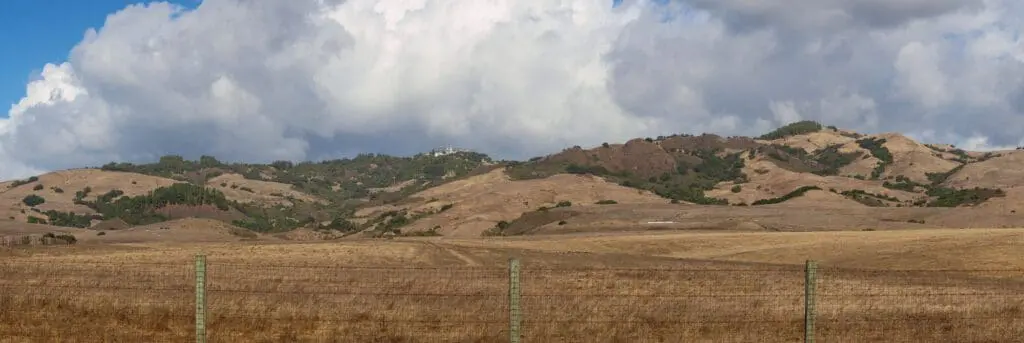
The starting point for both tours was the Neptune Pool, a large outdoor facility done in classical style. The Neptune is the third pool at this location, because Hearst needed bigger and bigger pools as he did more and more entertaining (the site was originally a small water feature in a rose garden).

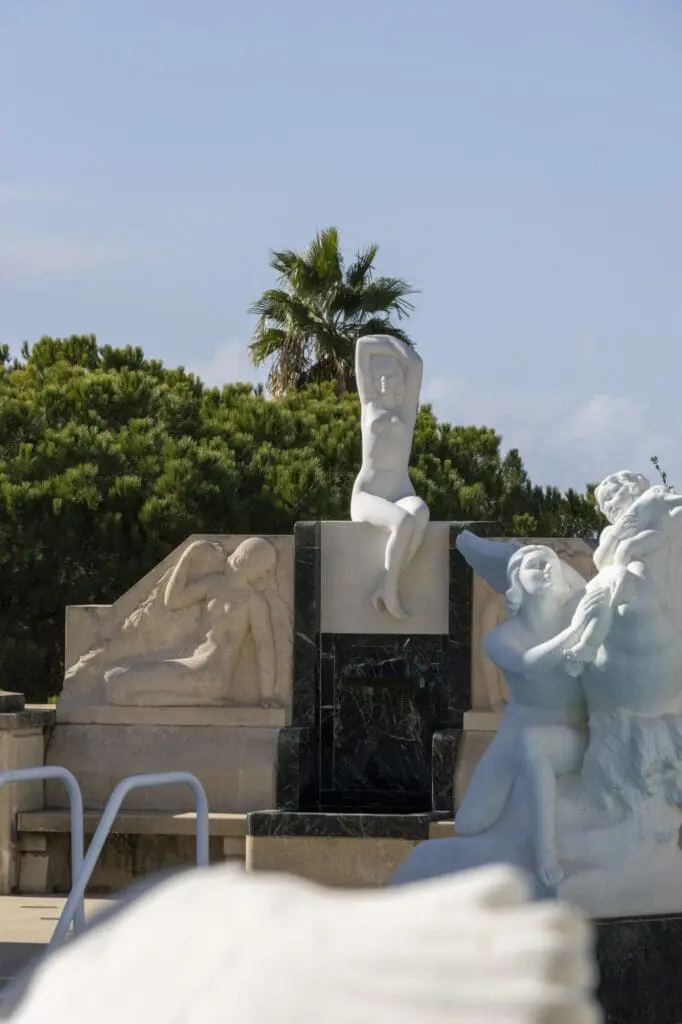
It’s impossible to avoid artwork at the site. In fact, it was designed, inside and out, to showcase Hearst’s love of art. Not just to display his wealth and taste, but to encourage appreciation and discussion by visitors.
That’s demonstrated by his willingness to display reproductions as well as originals. For example, these columnar busts, which are all over the site, duplicate a single piece that’s squirreled away inside one of the buildings.
In fact, if I had to guess, I’d say the reproductions outnumber the originals by at least three or four to one. But they’re so carefully crafted that it’s impossible for the untrained eye to realize they’re “fakes”.
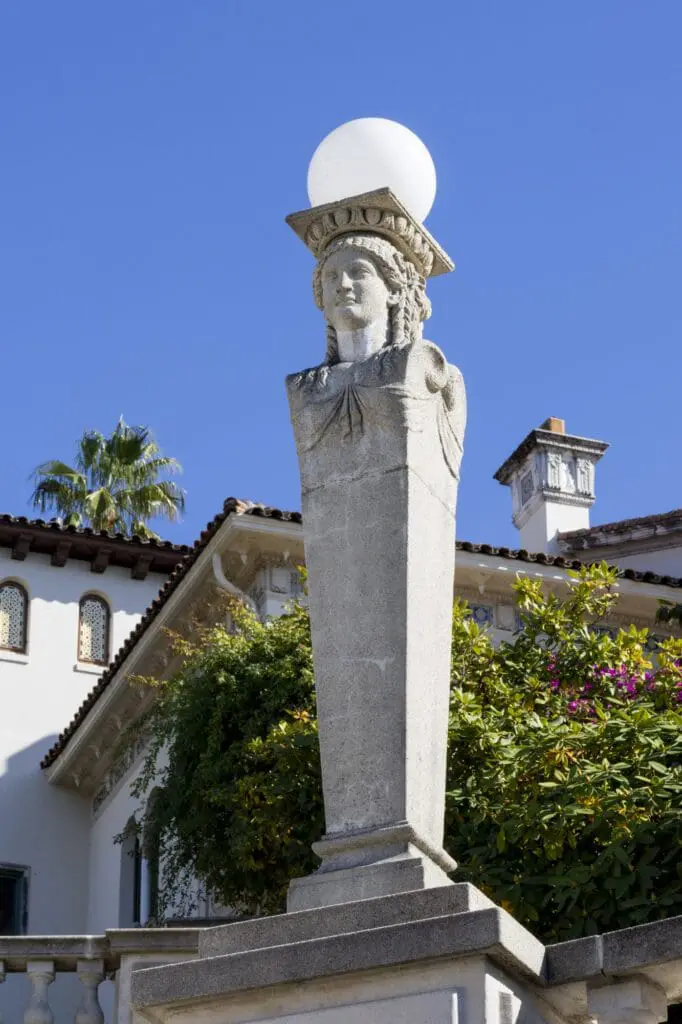
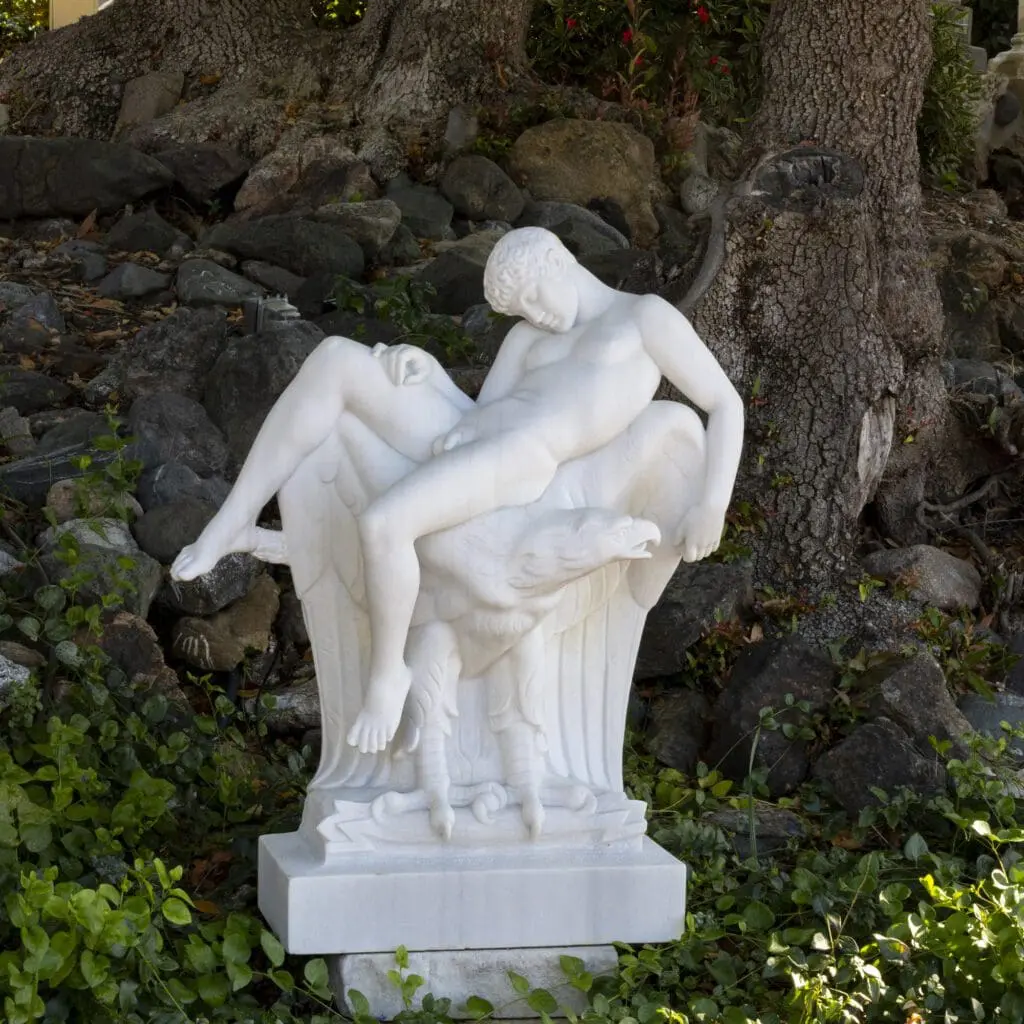
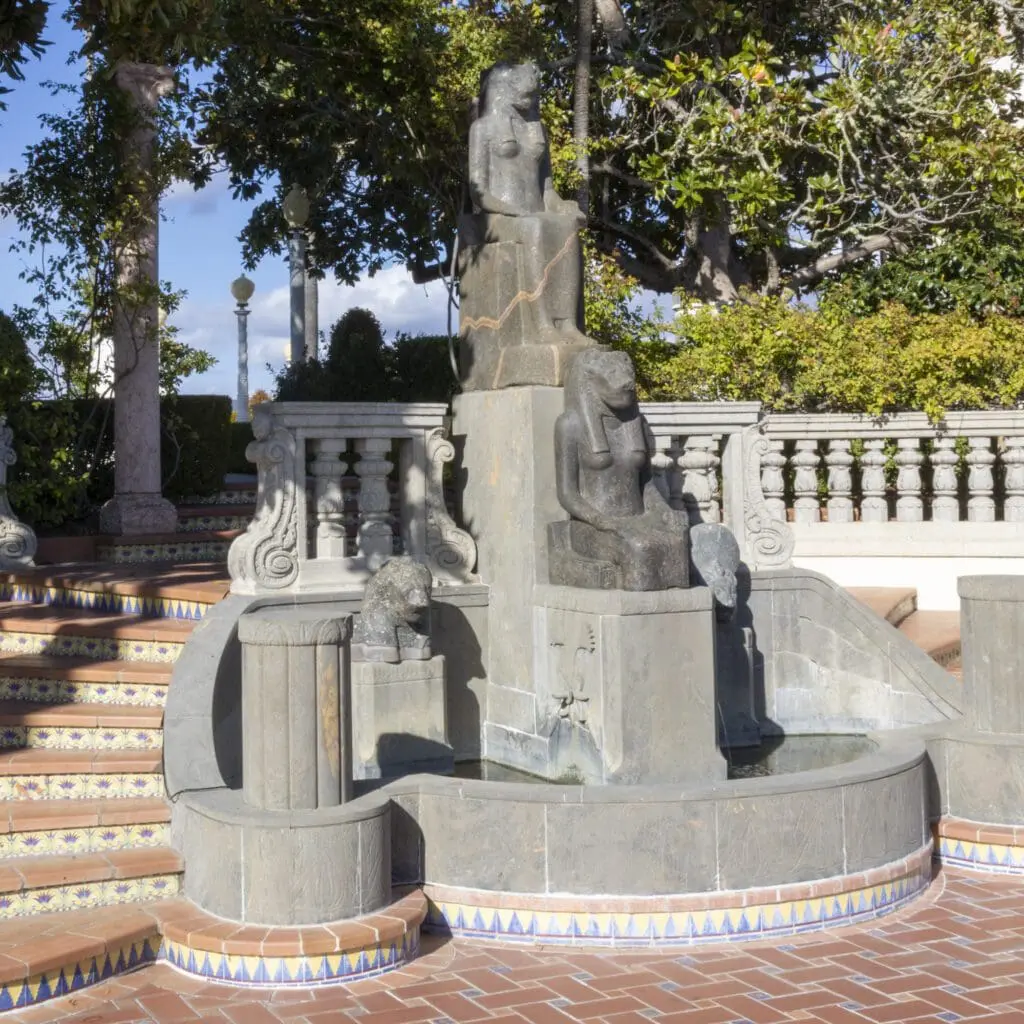
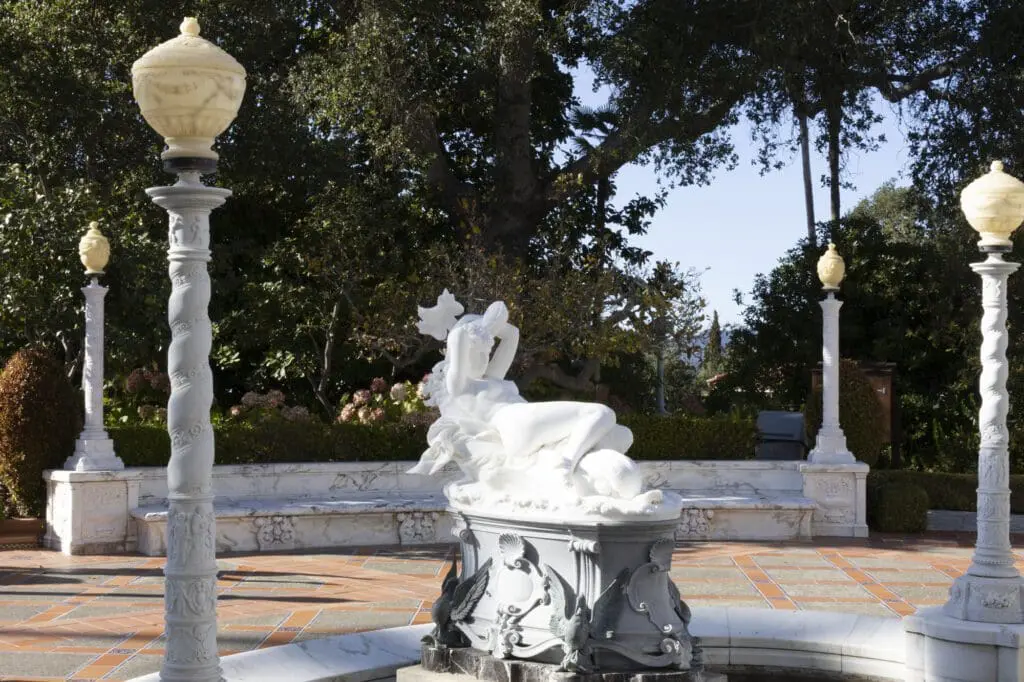
Construction — and reconstruction, because Hearst kept changing his mind about what he wanted — took place over many years, from the early 1920s to the mid-1930s, at which point Hearst had to put his empire into receivership to avoid bankruptcy. The reorganization was complete by the mid-1940s and, while it did reduce his art collection and land holdings,3 the “little ranch” itself was spared.
Key to the project’s success was Hearst’s partnership with his architect, Julia Morgan. From her Wikipedia page:
Morgan was the first woman to be admitted to the architecture program at l’École nationale supérieure des Beaux-Arts[1] in Paris and the first woman architect licensed in California.
She also loved reinforced concrete. Virtually everything at Hearst Castle is built out of reinforced concrete, While the buildings — at least the ones that were finished — are beautifully clad, there’s also quite a bit of “plain” reinforced concrete on display4.

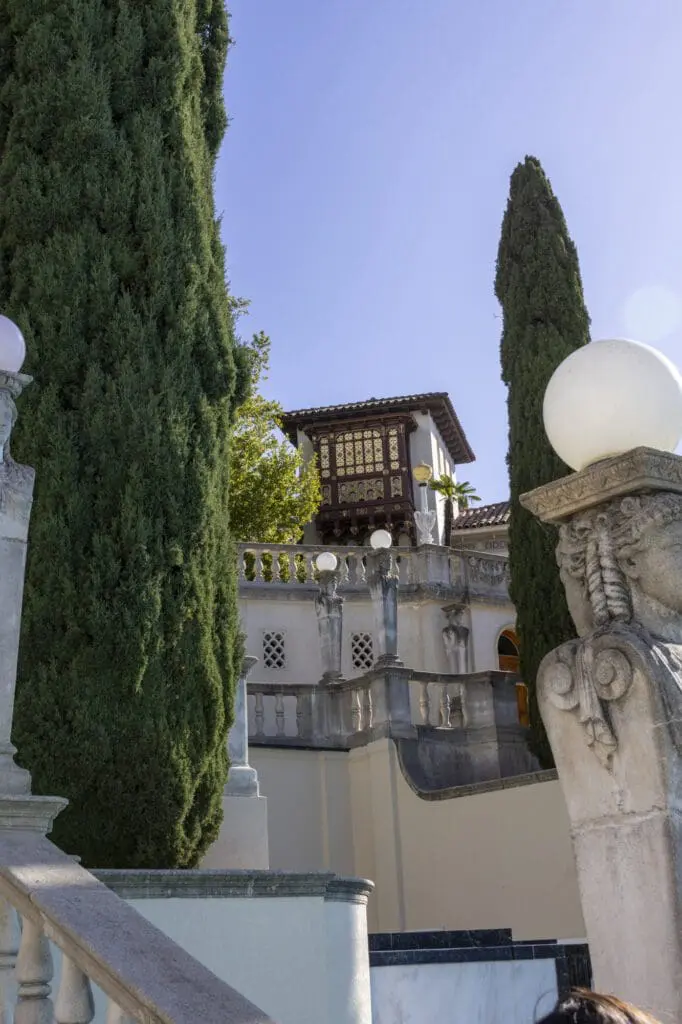
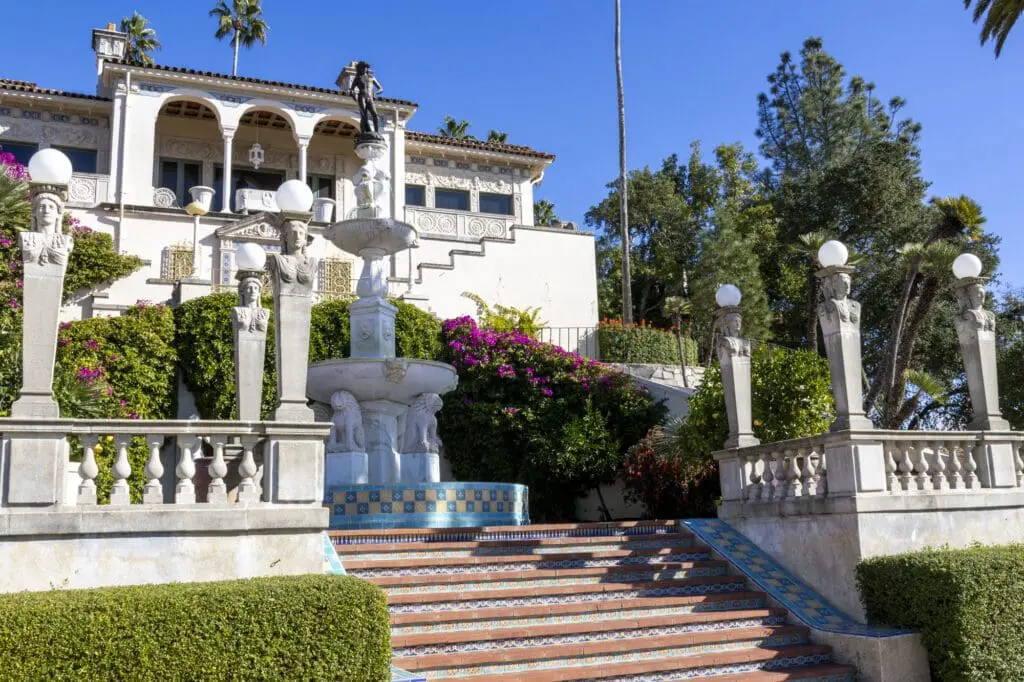
She was ahead of her time in this. In fact, Hearst Castle exceeds current California building code — she knew she was designing in an area prone to big earthquakes — and has suffered no significant damage from large quakes. Although they did lose one of the ornamental ceramic pots in Hearst’s library…which was so carefully restored — by the Getty Museum — that I couldn’t tell from across the room that it was ever damaged.
The biggest building on the grounds is Casa Grande, and it is indeed a big house. So big, in fact, that it wasn’t completed by the time Hearst died. Despite that, it managed to serve as the primary entertainment area for his numerous parties.
Which were almost always hosted by his long-time paramour Marion Davies. Hearst never divorced his wife, with whom he had a number of children. But she mostly lived in New York City and Long Island, and only occasionally came to stay at the little ranch.
Davies and Hearst had separate — huge and impressively decorated — bedrooms on the third floor of the big house.
Hearst purchased casa grande’s entrance from a Spanish convent (he benefitted from hard economic times in Europe, which made a lot of artworks available at the right price). The entrance and the surrounding sculptures make the building look quite a bit like a cathedral.
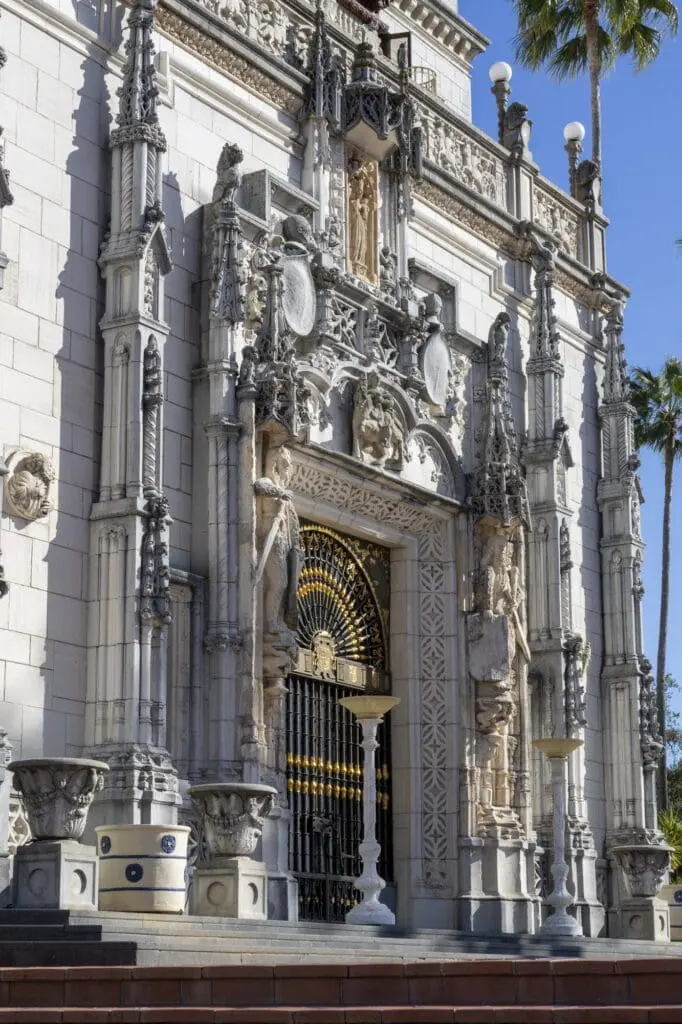
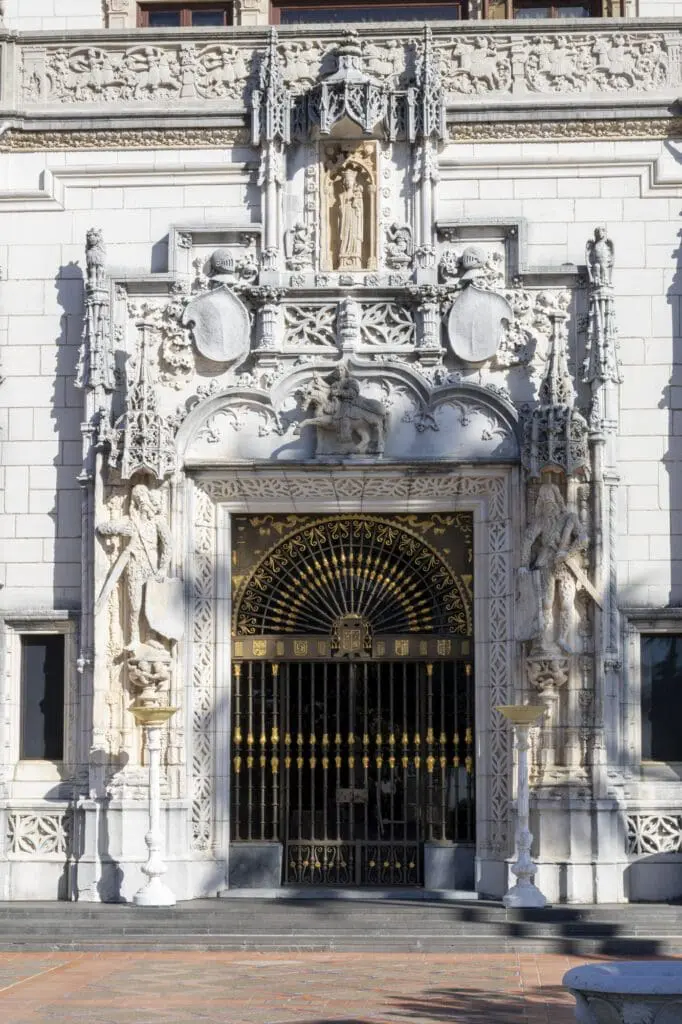
Stepping through the doorway puts you into a high-ceiling room filled with all sorts of art. Not to mention a massive fireplace, only part of which is original (the rest was carefully crafted to match). As with the great houses we saw on our recent trip to Italy, the ceilings themselves are integral parts of the display.
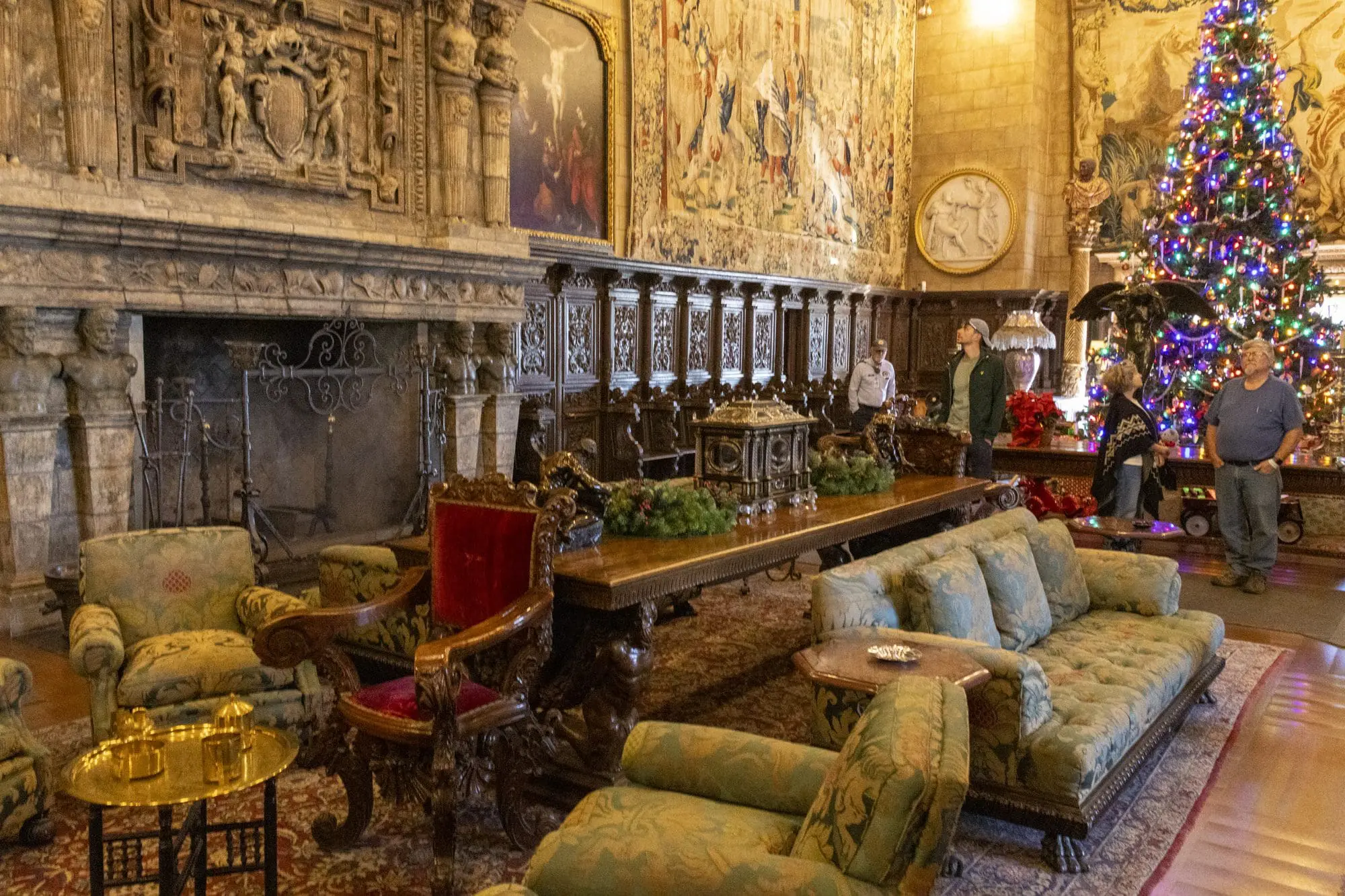
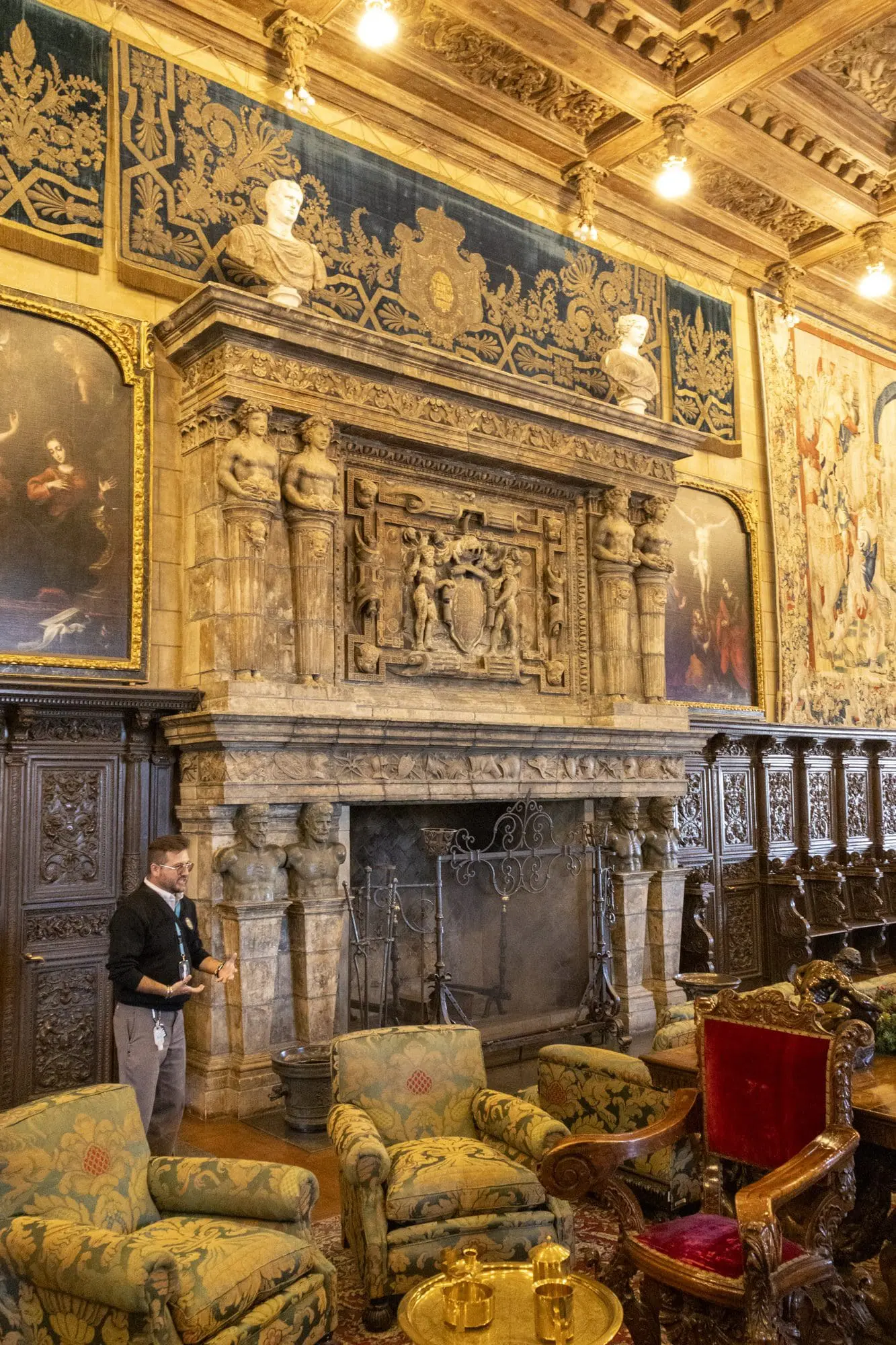
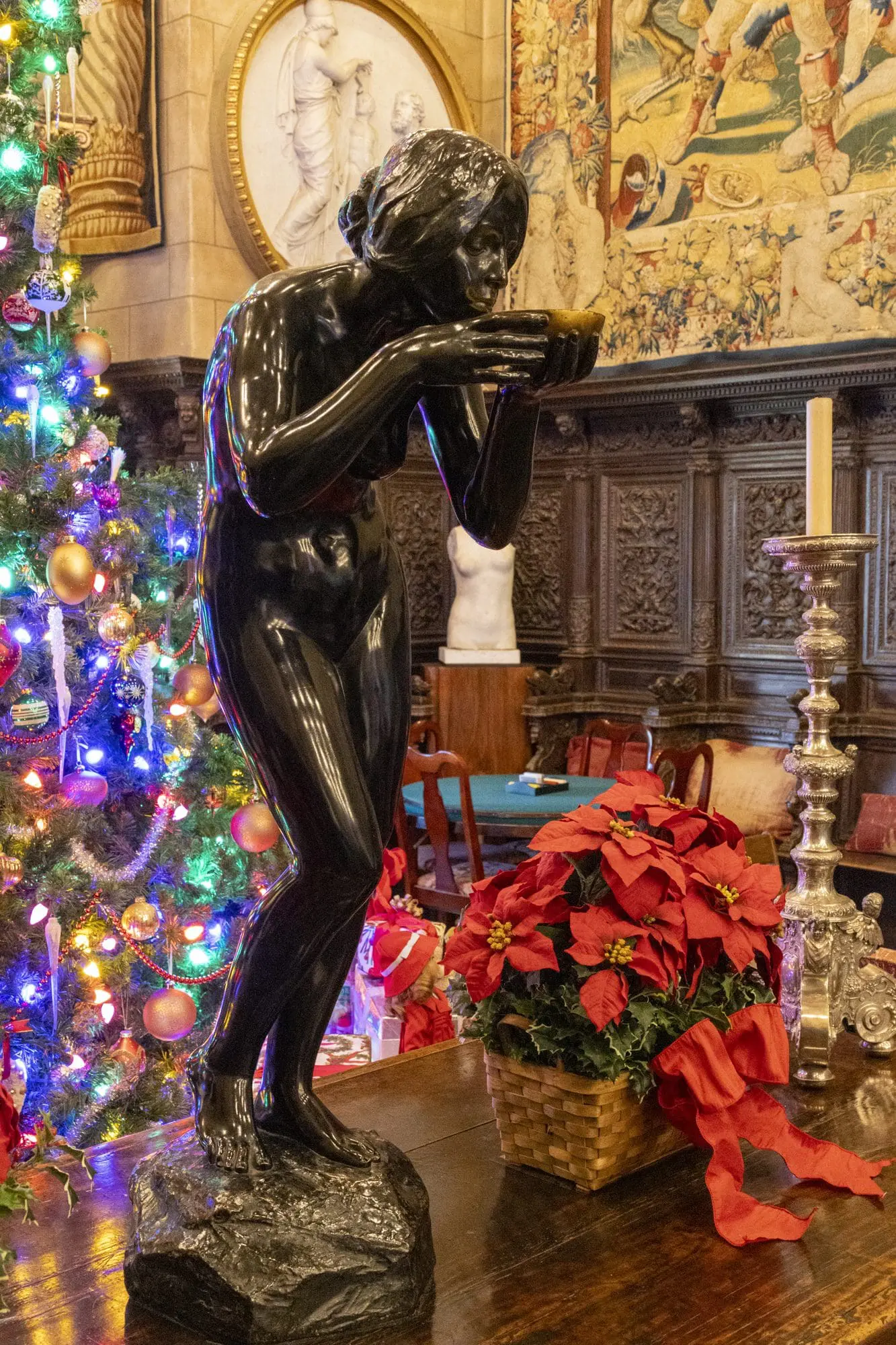
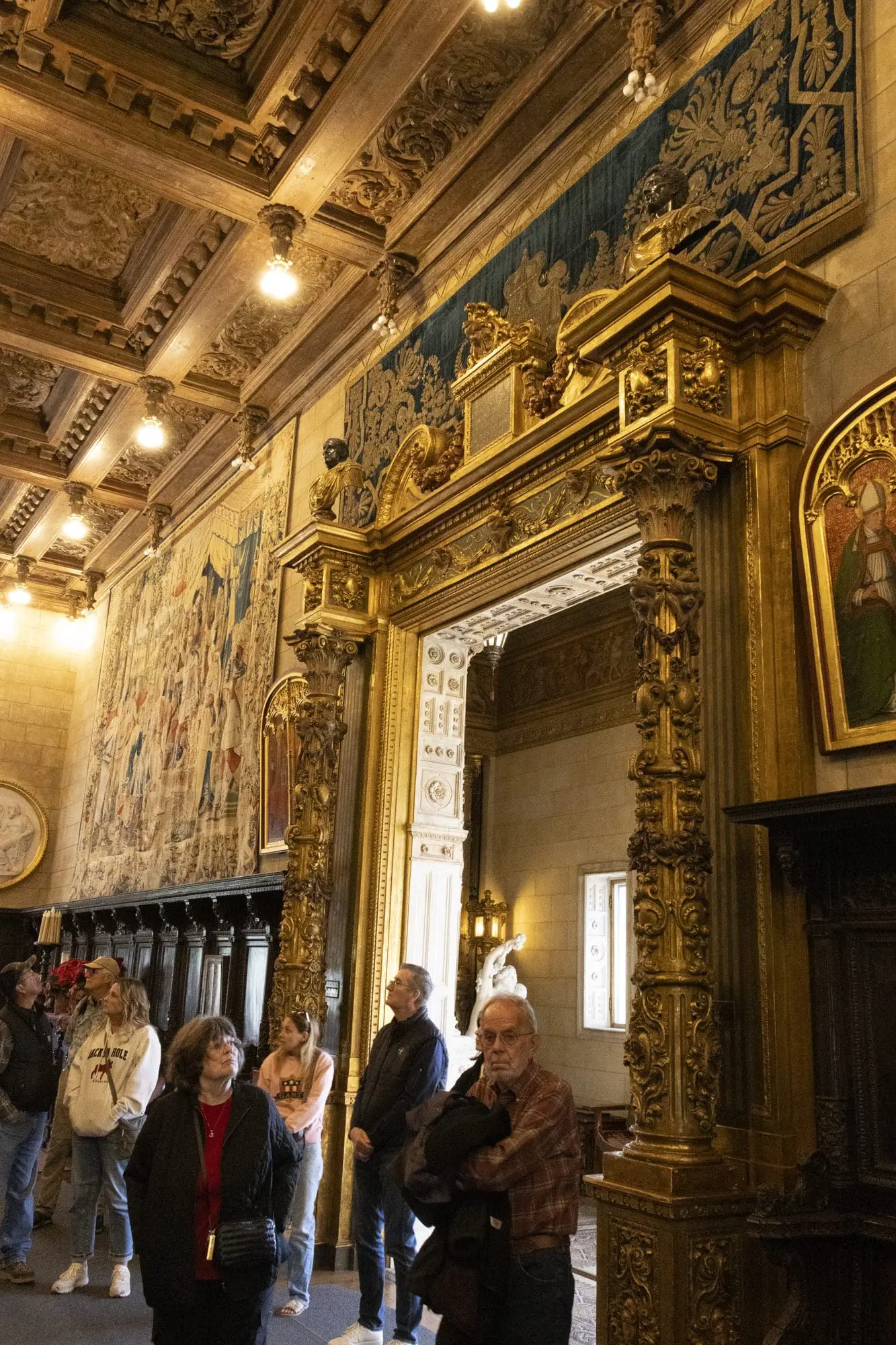
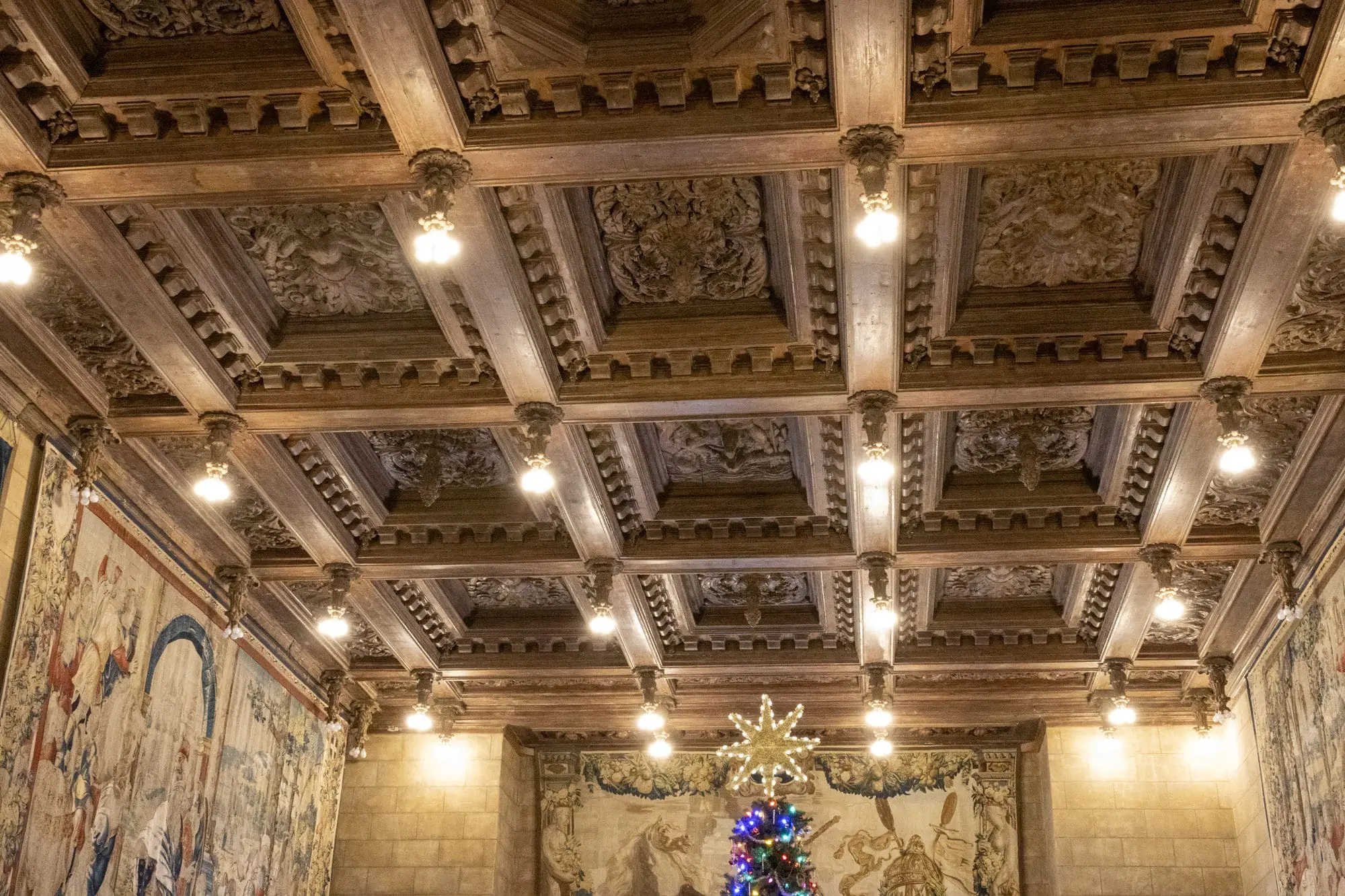
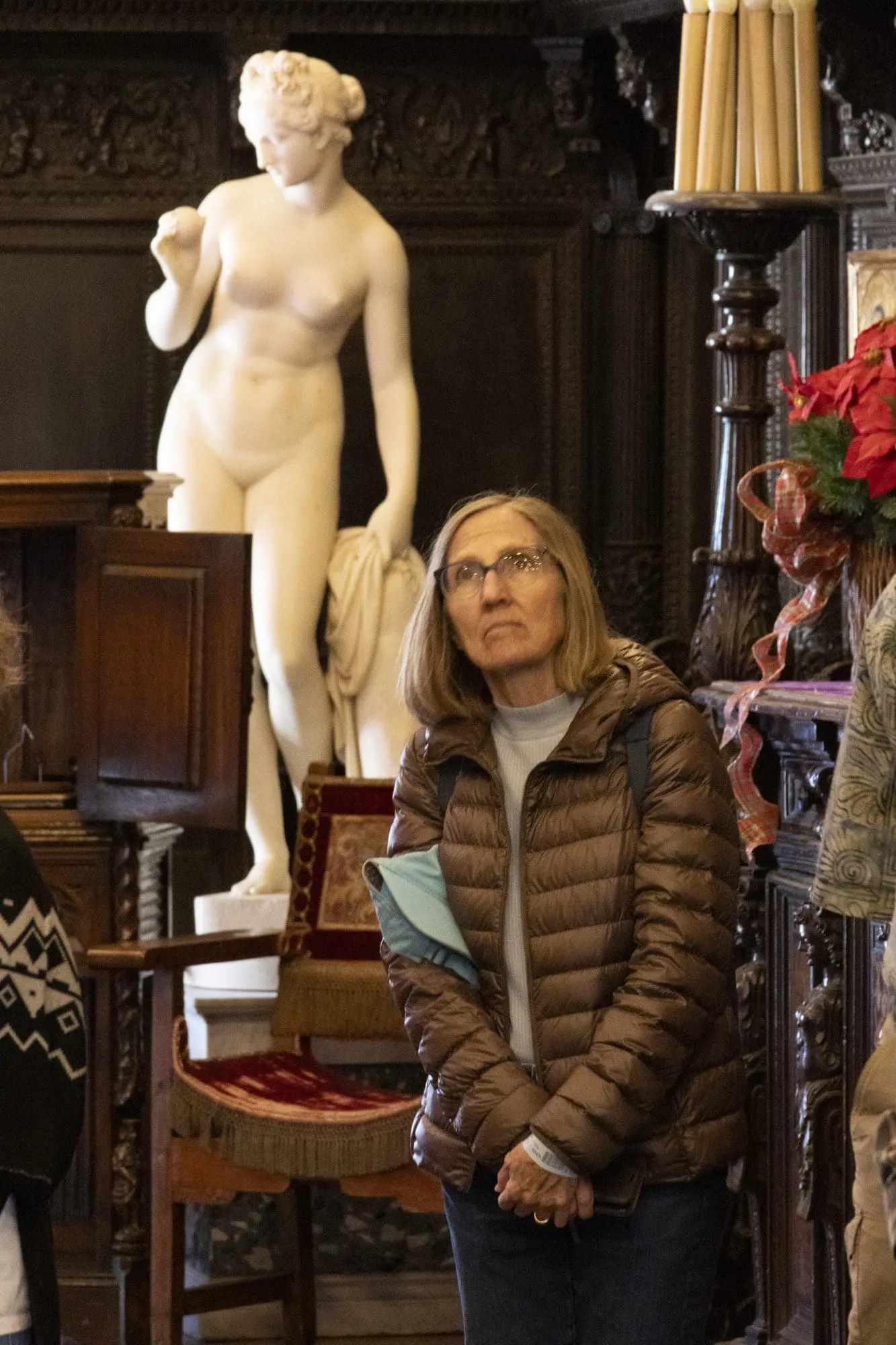
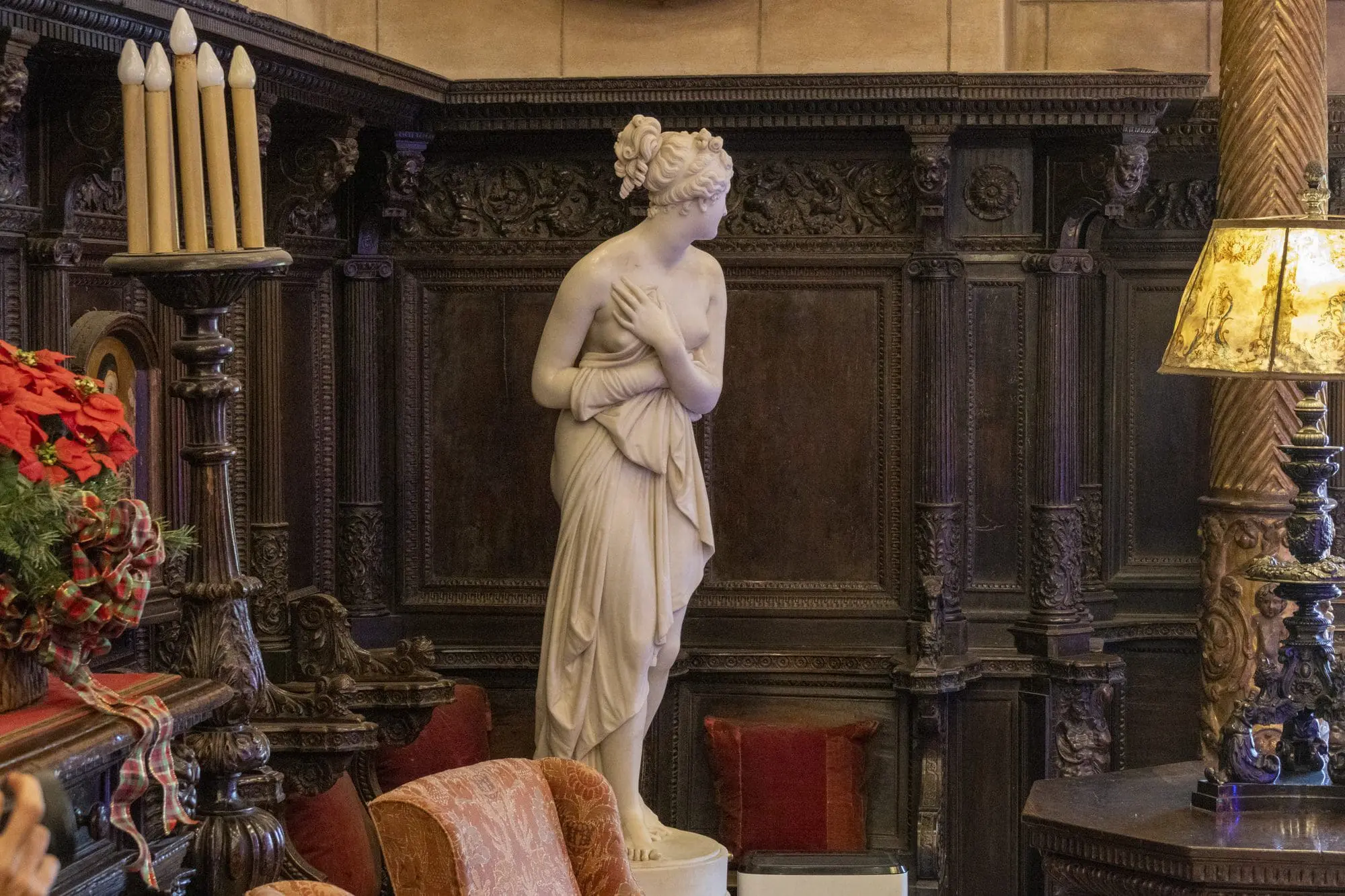
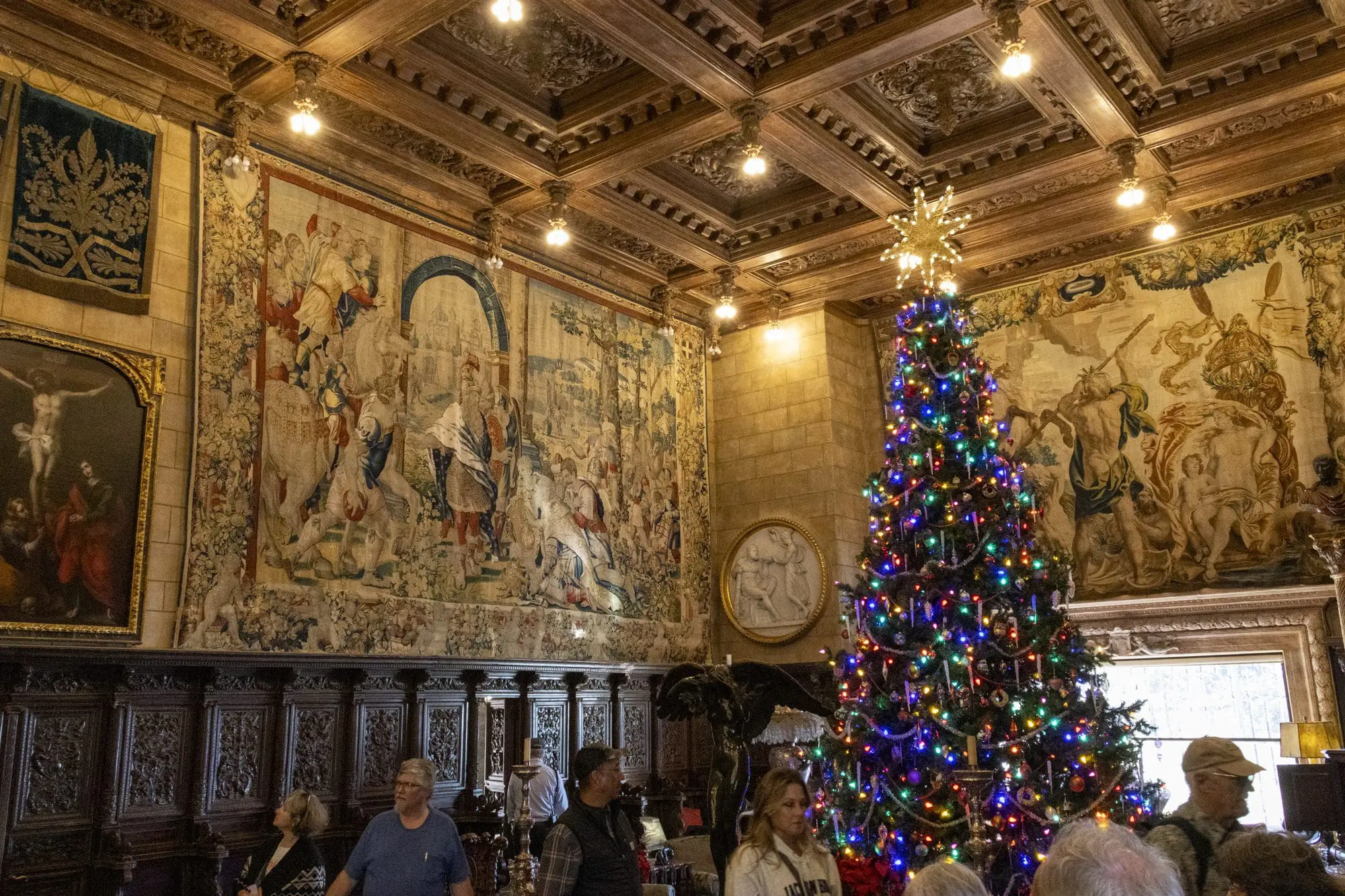
Hearst did not interact with his guests much during the day, except for occasional tennis games and horseback rides. He was wont to suddenly appear in the big house’s receiving room around cocktail time, using a somewhat hidden passageway from upstairs, where he’d been working.
Dinners were lively affairs in a very large dining room behind the receiving room.
Hearst and Davies sat in the middle of the table. The most recent guests, particularly the ones who had not visited the castle before, were seated next to and across from them.
Charlie Chaplin, a frequent visitor, once joked that the longer you stayed the further away from the table’s center you were seated. When you reached the end, you knew it was time to take your leave.
After dinner guests would repair to either a sitting room (which offered a spectacular view of the mountains) or an entertainment room, where they could play billiards or snooker.
All the rooms were of course filled with art, and thoroughly decorated.
There was also a private theater, where the hosts, their guests, and the staff would gather to watch movies in the evening.
The upper levels of the big house contain a large number of guest rooms (Morgan got quite creative at squeezing in more rooms as Hearst’s getaways got bigger and bigger). They were all beautiful…but I have to say, if I was a guest, I would’ve been more than a little overwhelmed at waking up amidst all that splendor.
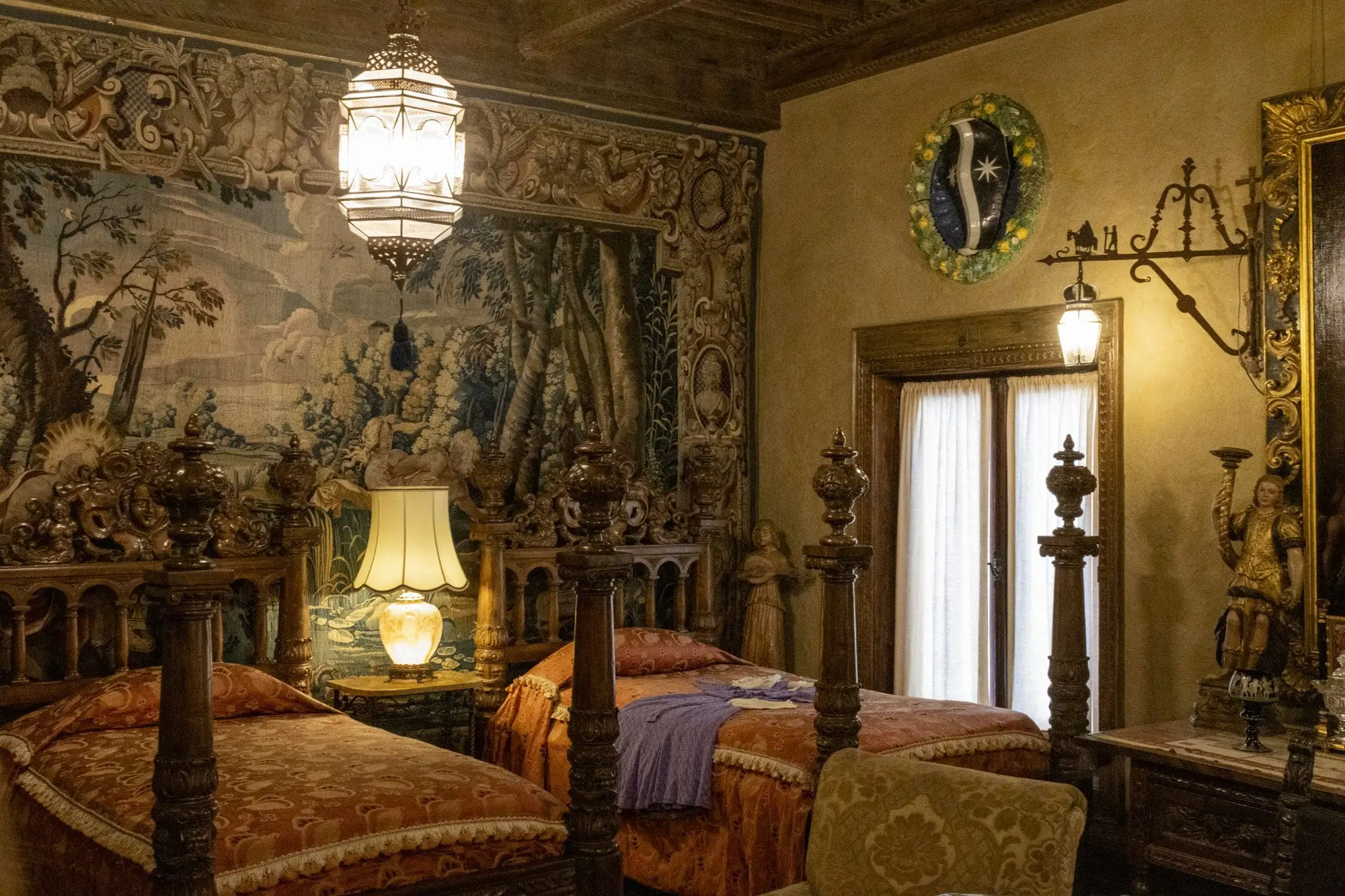
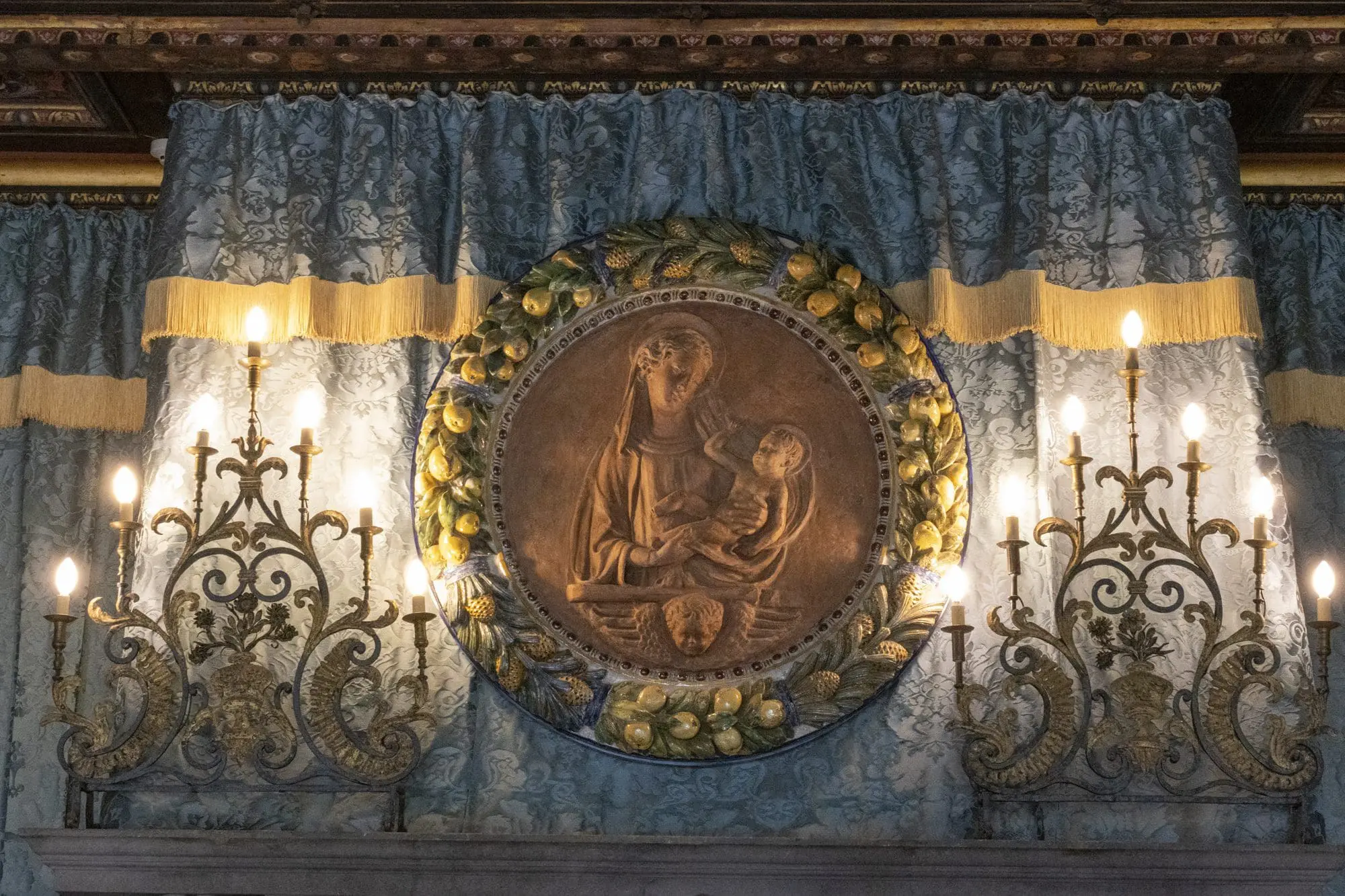
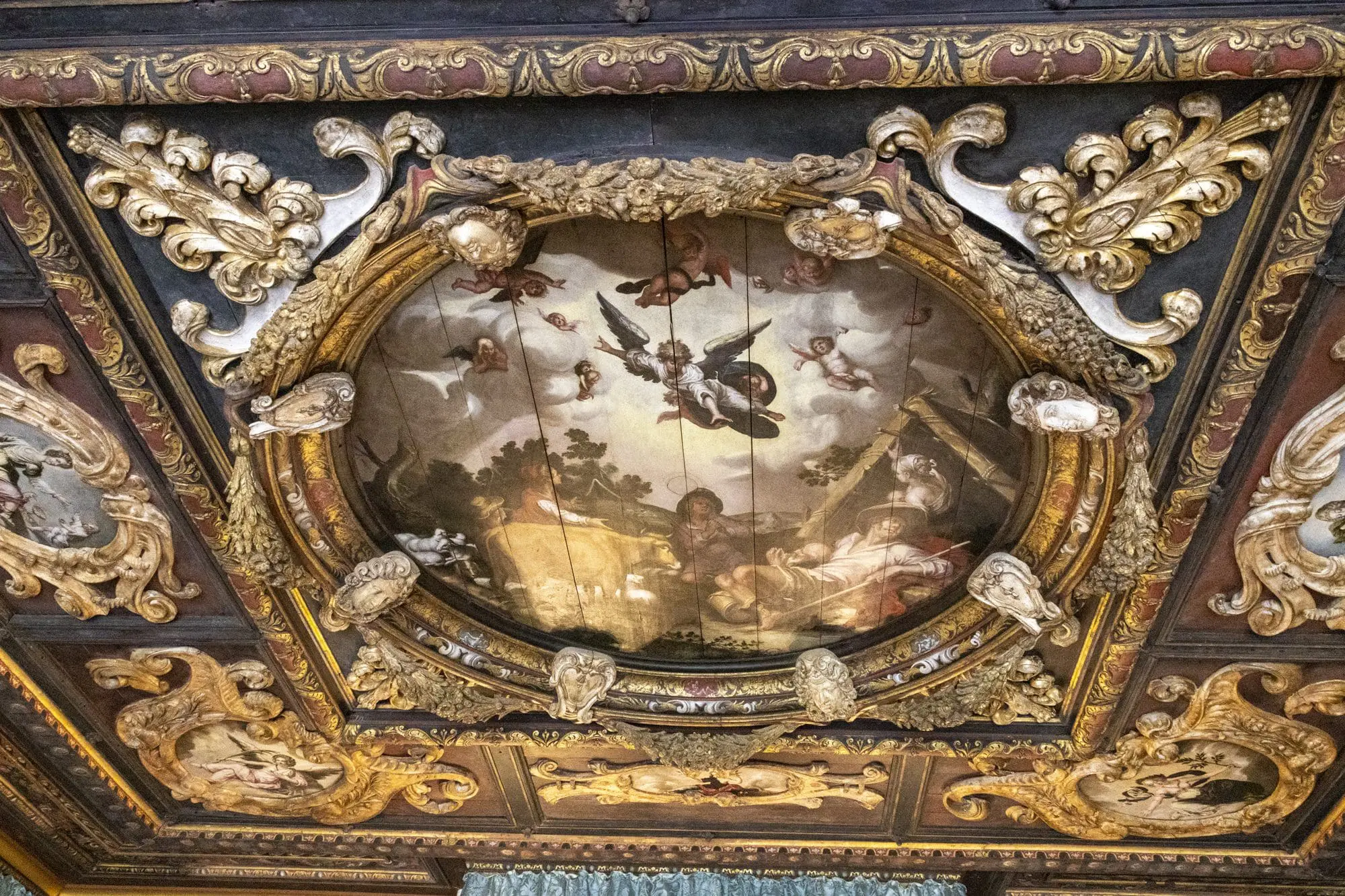

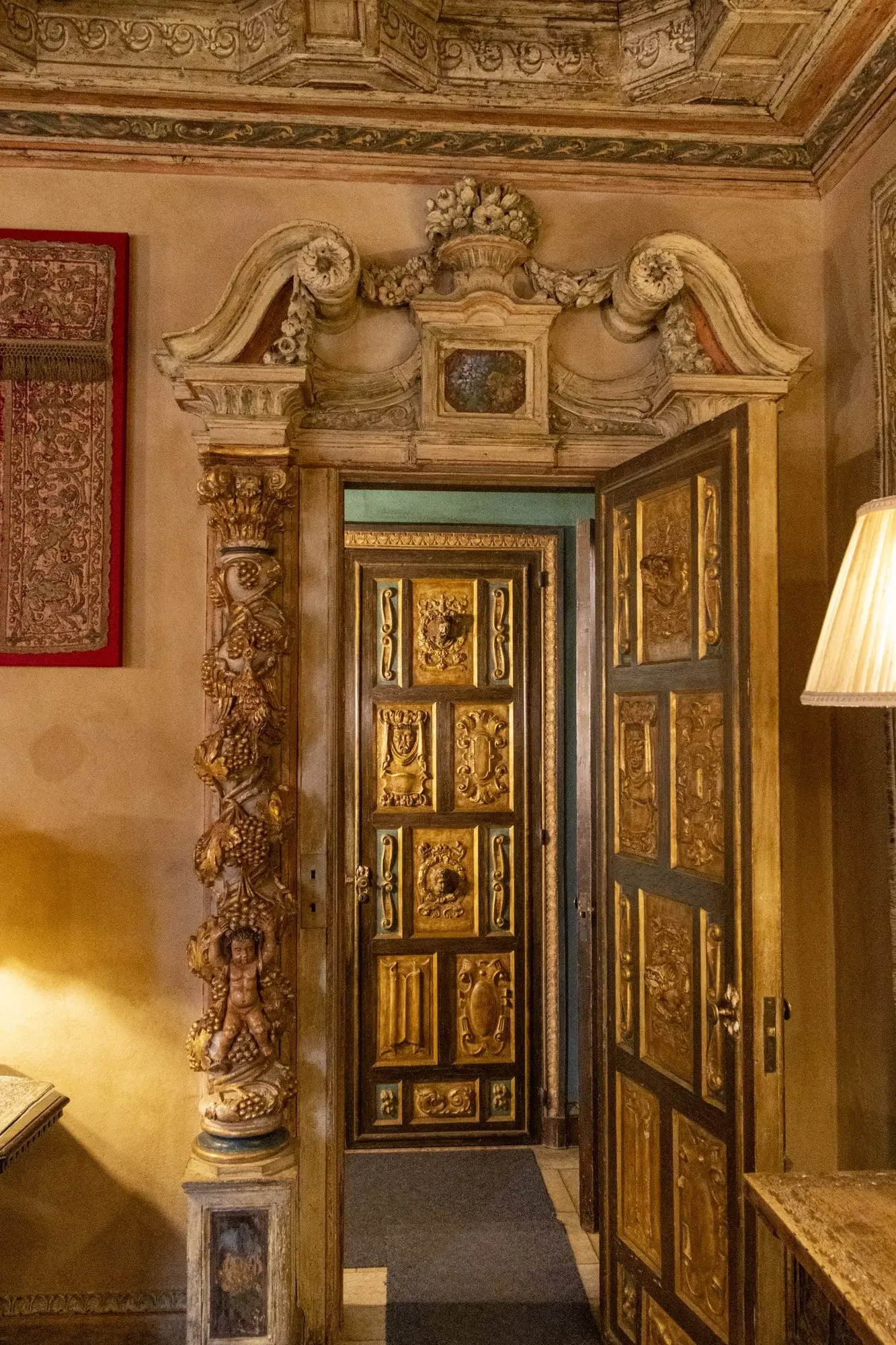
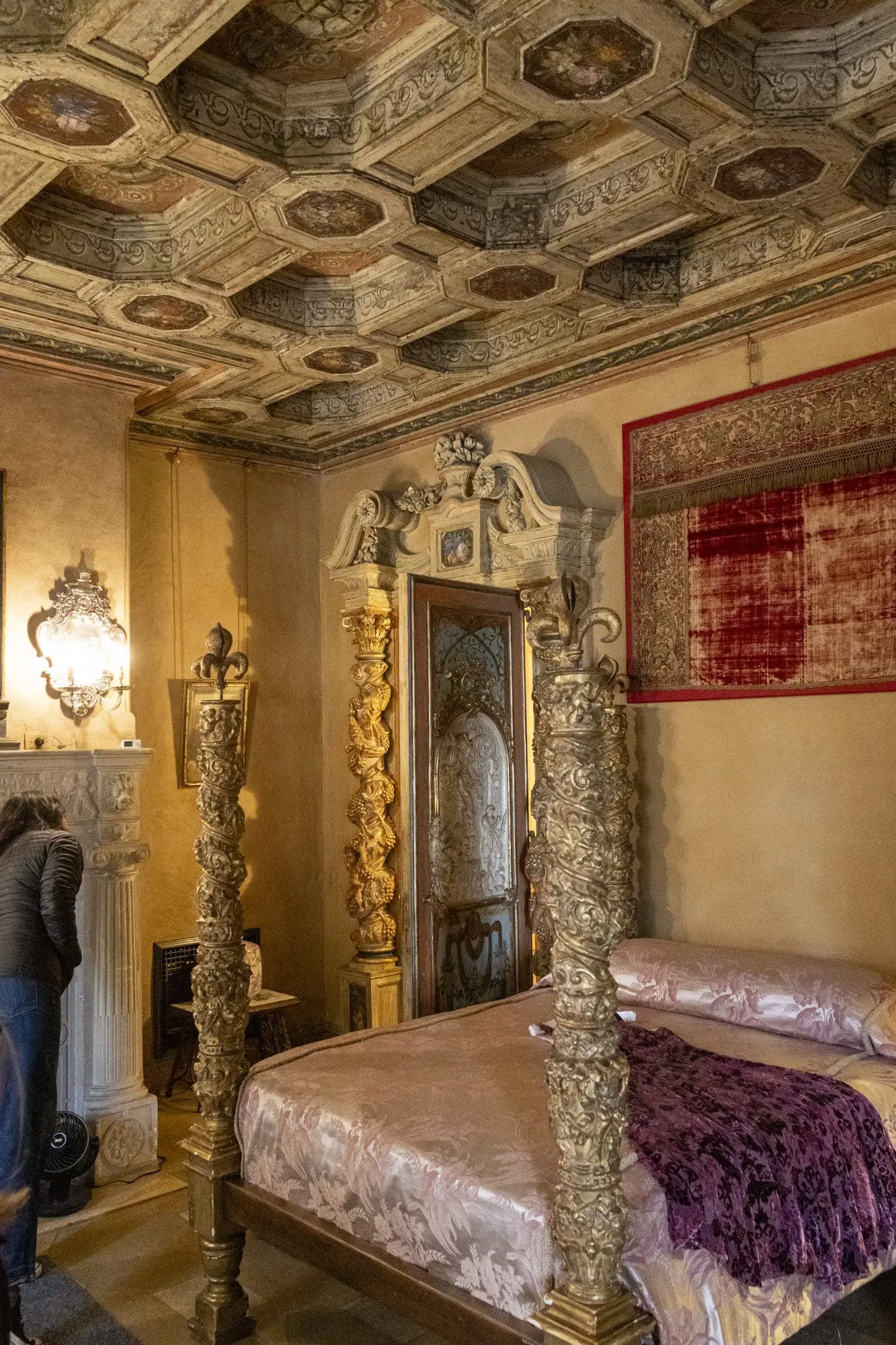
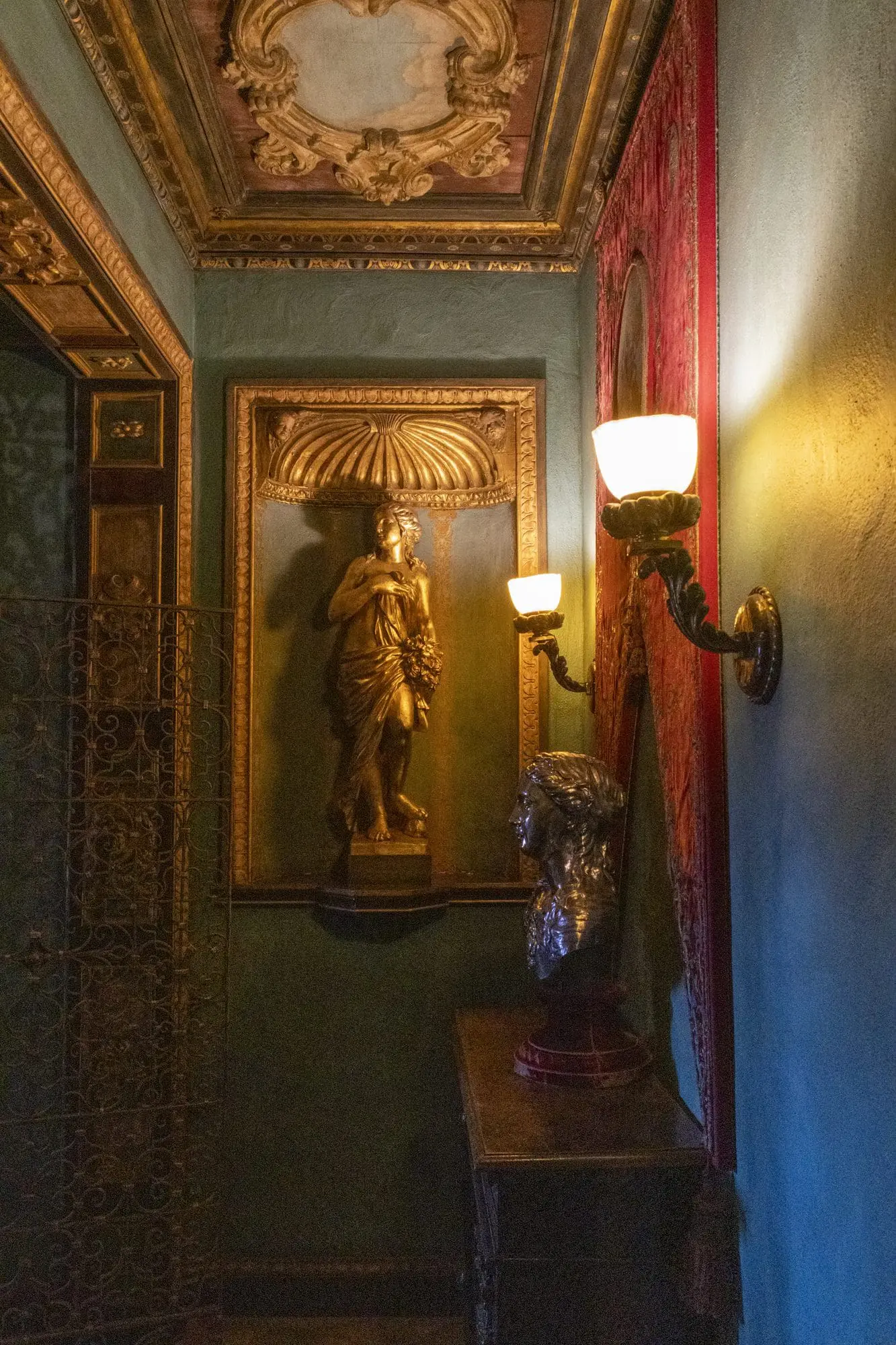
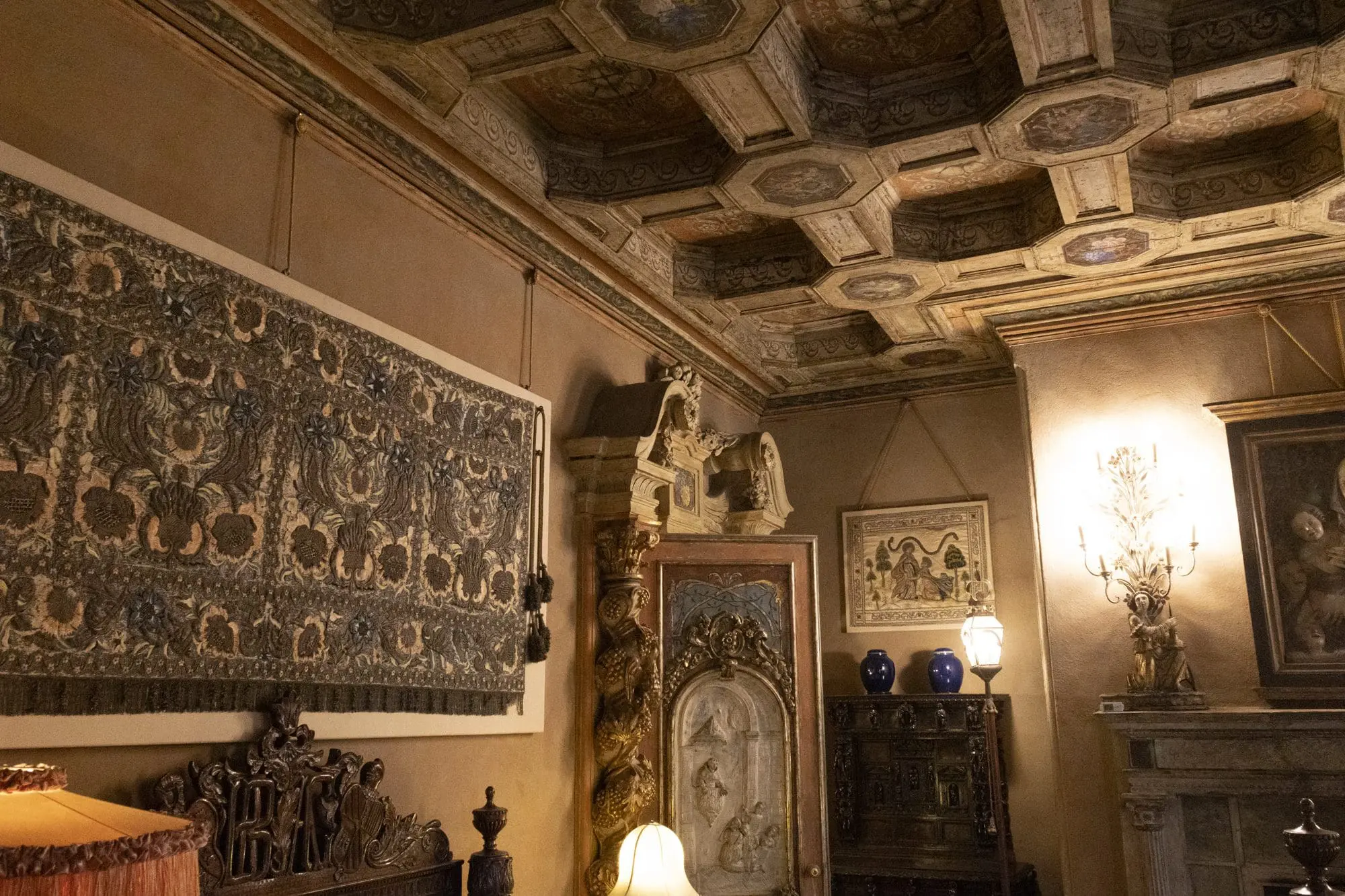
The one room I really lusted after was the library. I like being surrounded by books, and Hearst’s huge library was filled with them. Plus, it looks out on a beautiful stretch of ranchland and coastline. What’s not to like?

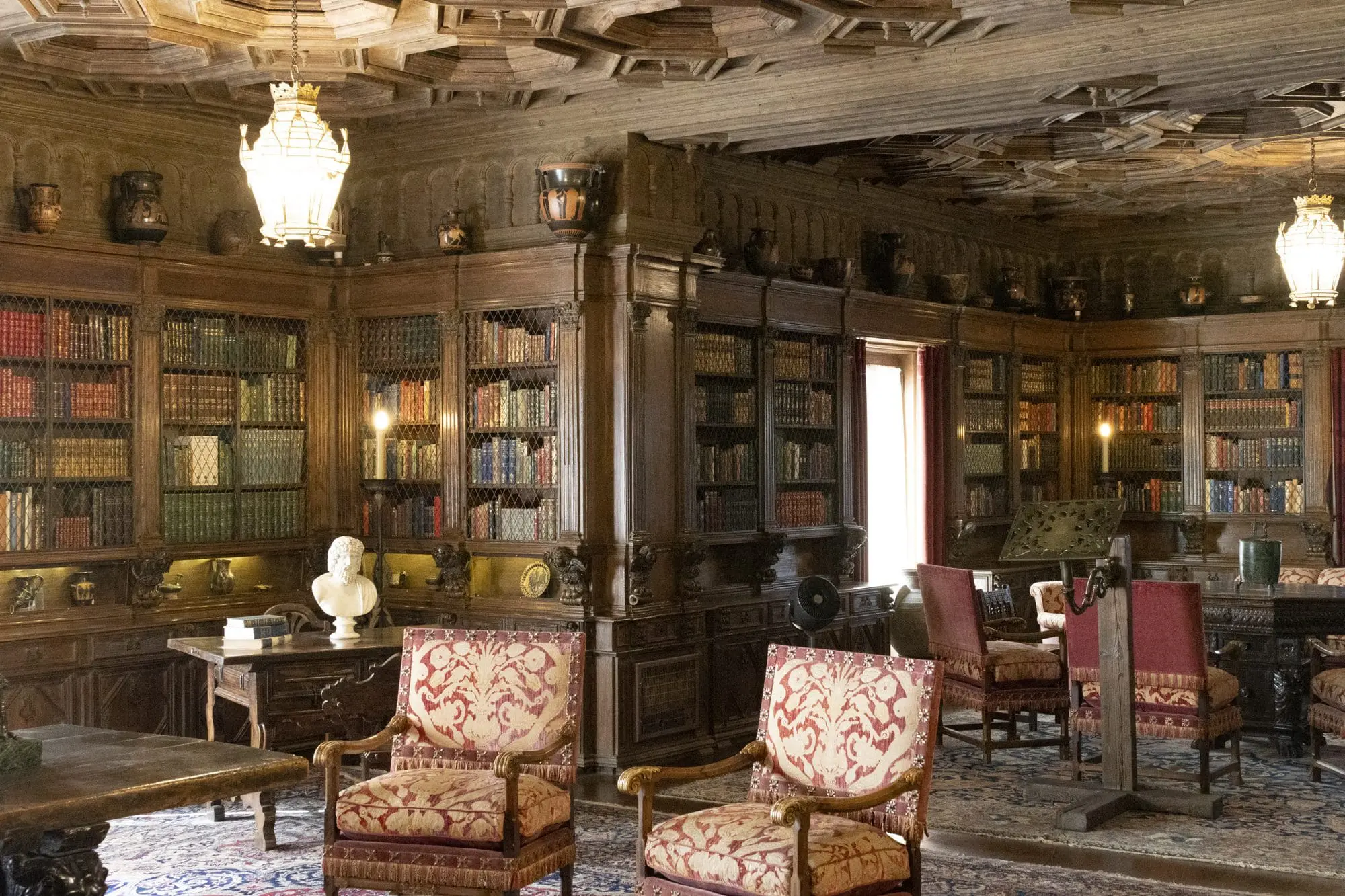
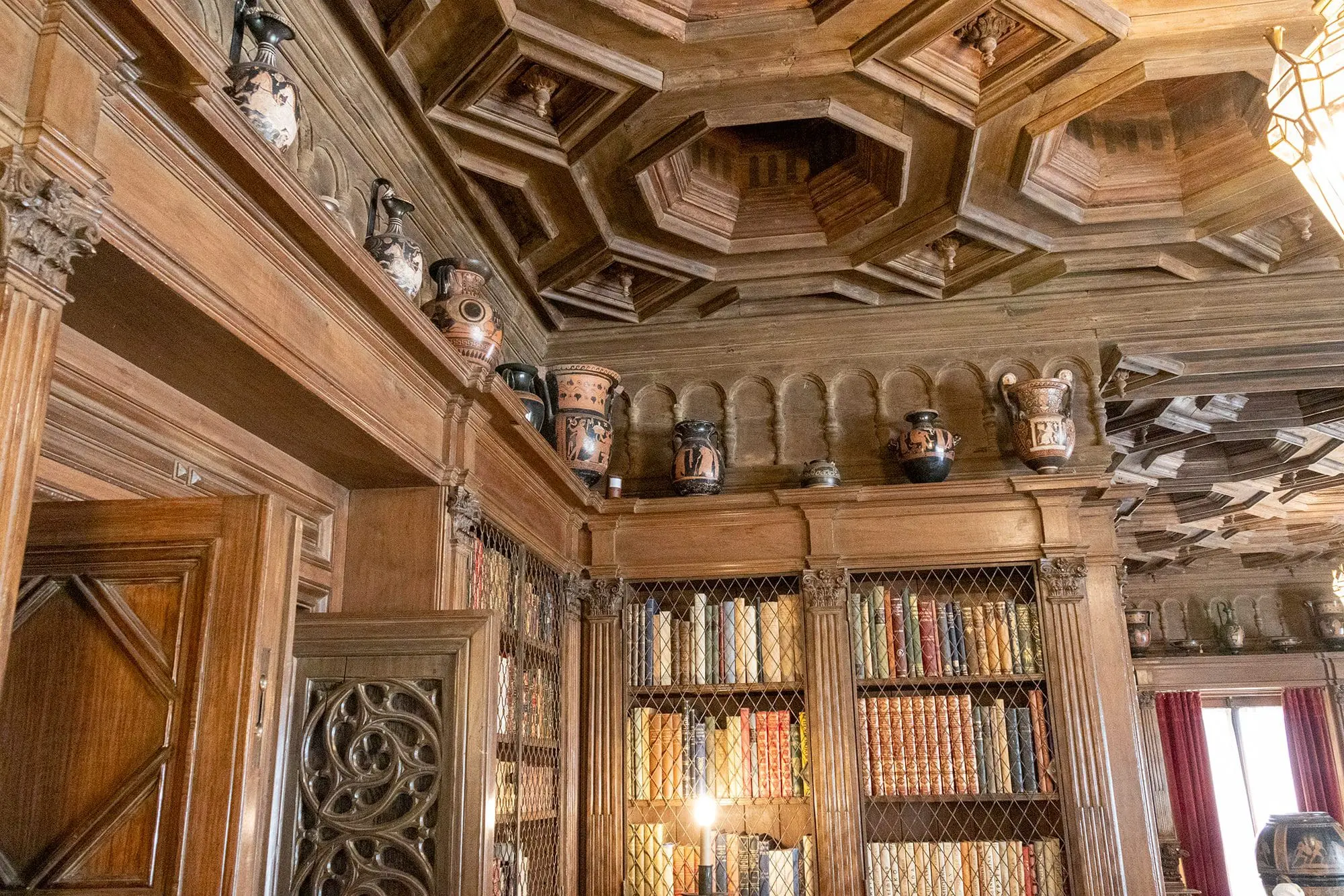
The next floor up contained Hearst’s and Davies’ bedrooms, as well as a large sitting room.
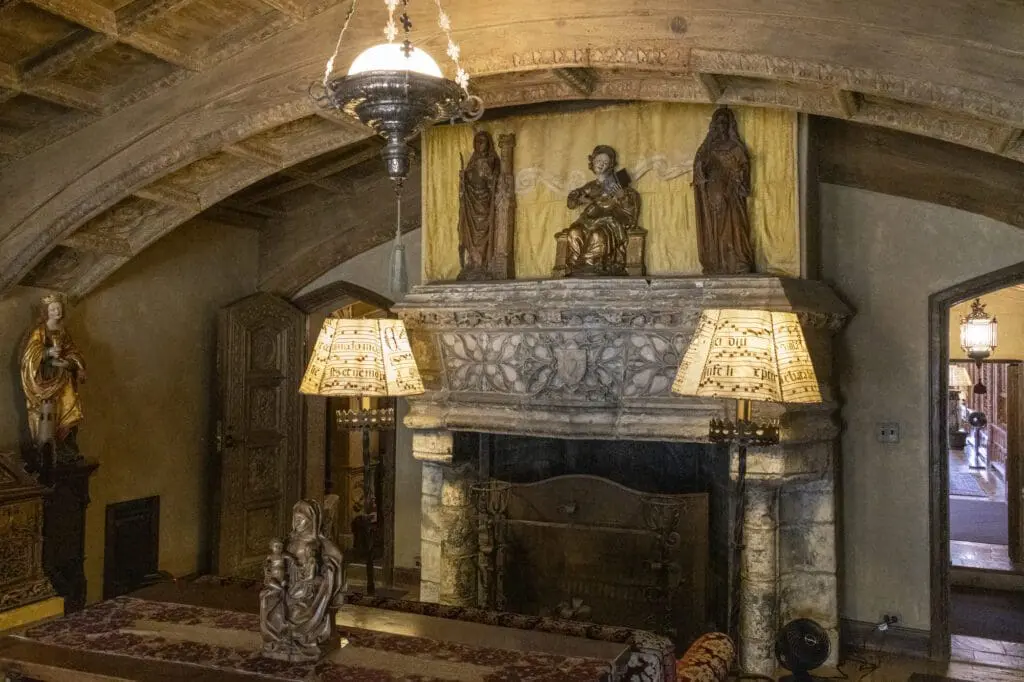
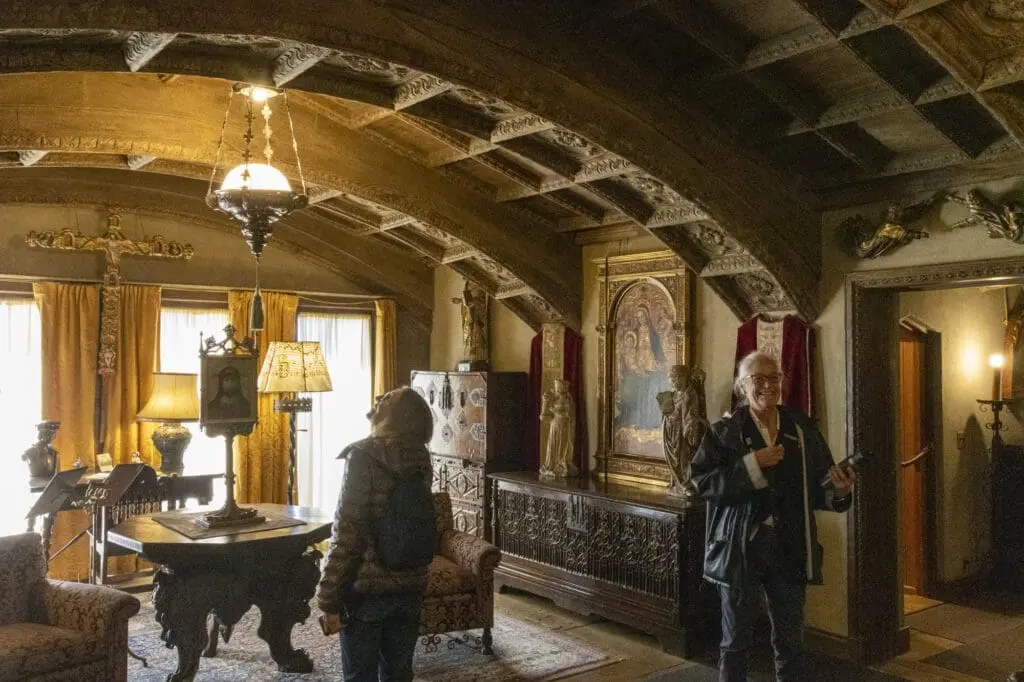
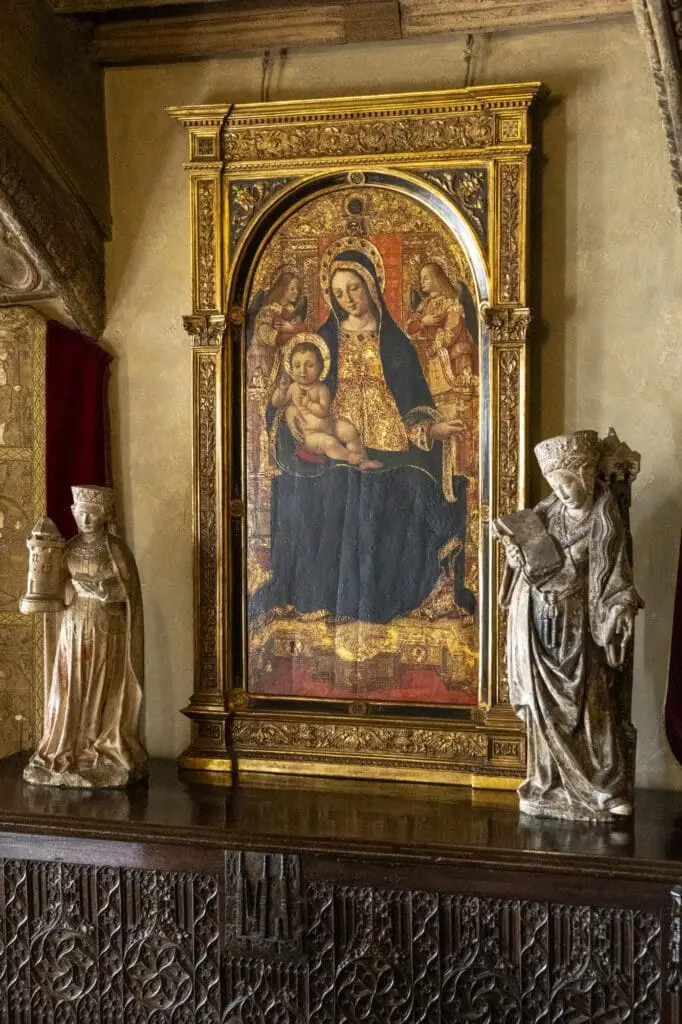
I expected to see a king-sized bed, at least, in Hearst’s bedroom, to go along with his king-sized personality. But his bed looks like a basic queen. However, our docent told us it was modified to be seven feet long…but didn’t appear so, because the room itself was so large.
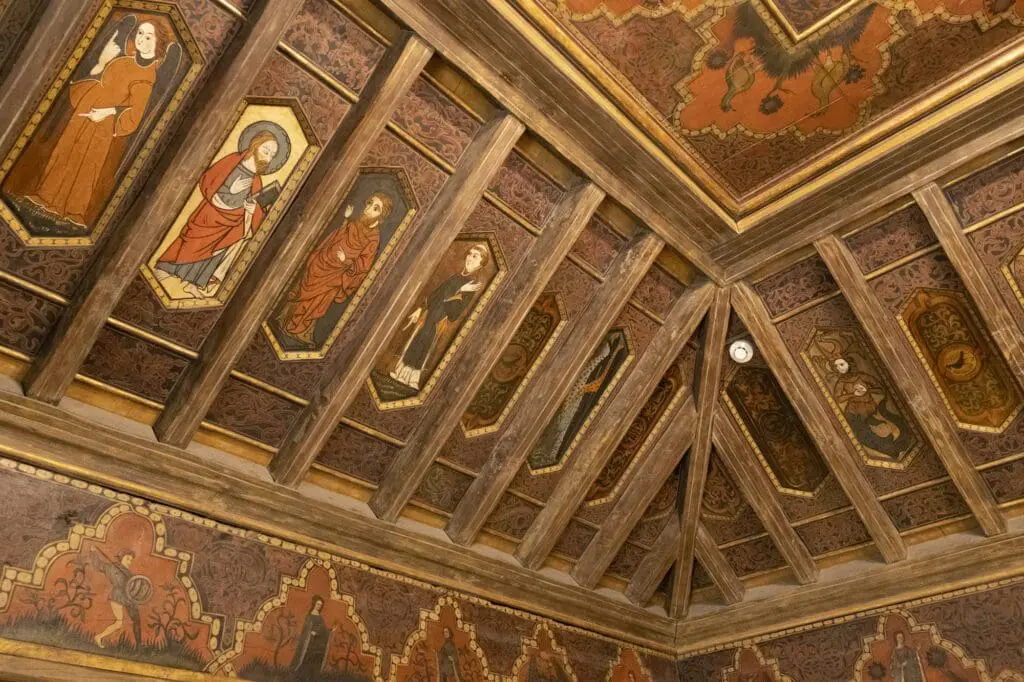
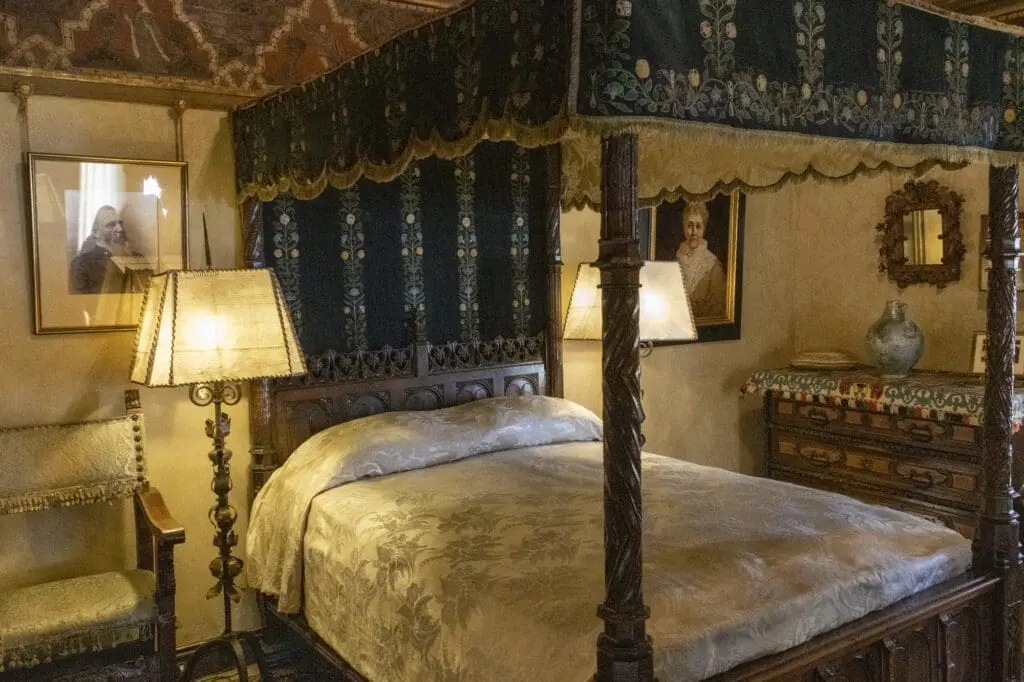
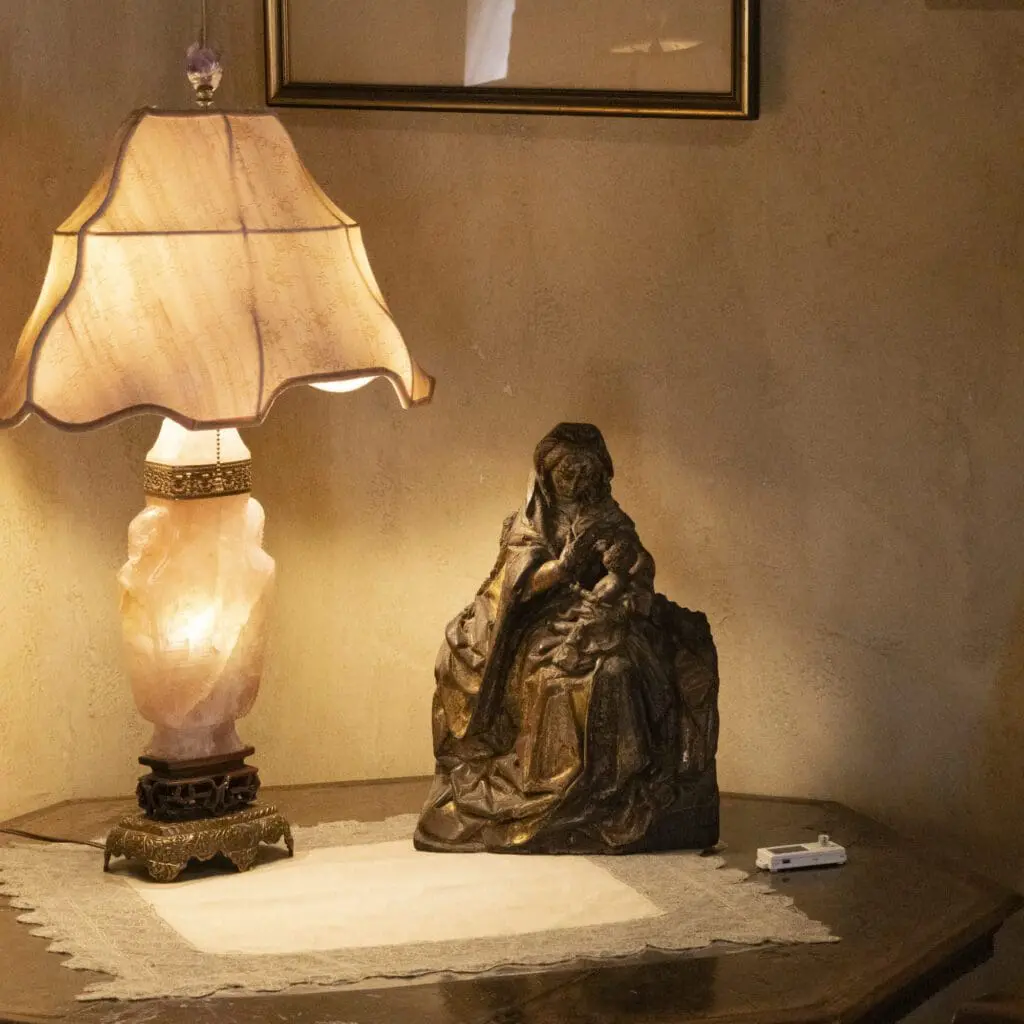
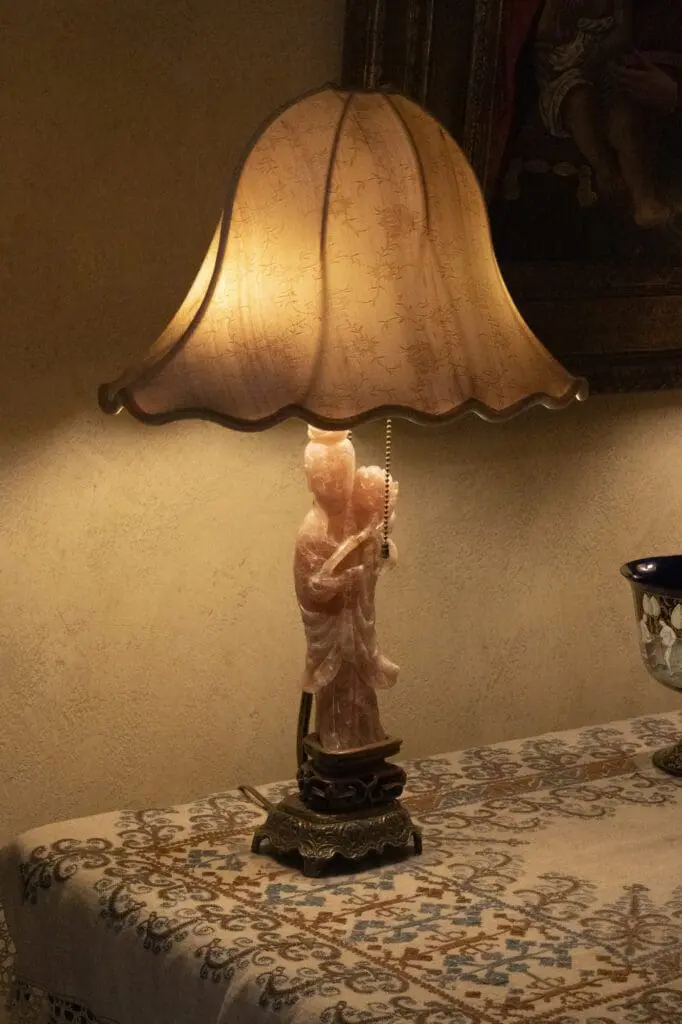
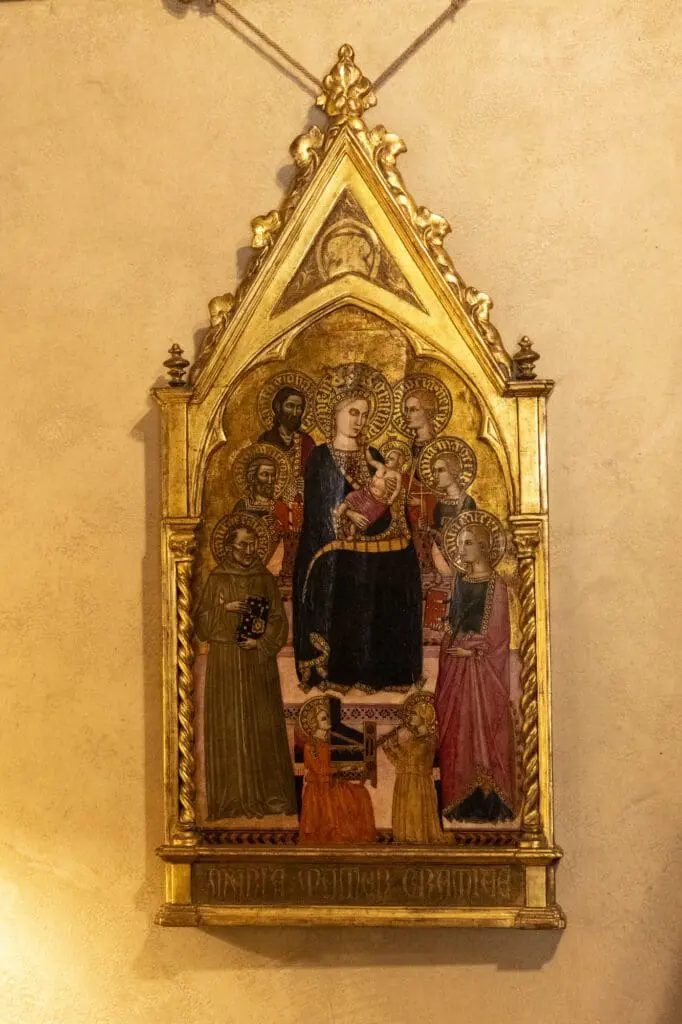
On the way out of the big house, we noticed a safe. Turns out it’s the only safe on the premises. It existed to…protect Hearst’s booze.
The final stop on the tour was a bit of a surprise, and surprisingly impressive: a massive — and massively decorated, with millions of small tiles as well as a lot of gold leaf — indoor swimming pool.
It even has a 10-foot diving board. Well, actually a diving balcony, but you get the idea.

although you do risk running into what passes for bad weather in California — rain, cold and fog; when we visited, though, it was mostly clear, if a bit nippy ↩
the Comstock silver Lode in Nevada, and Anaconda Copper, to name just two ↩
as well as cause the divestiture of most of the zoo animals (!!) he kept at the castle ↩
for example, most of the columns around the grounds that hold up busts and other artwork ↩
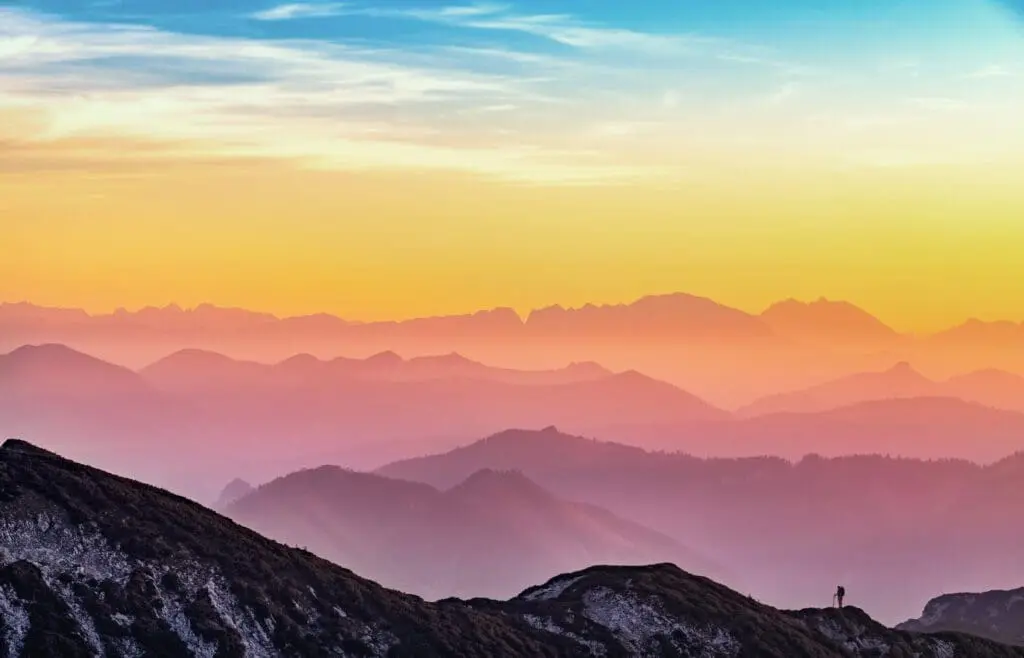
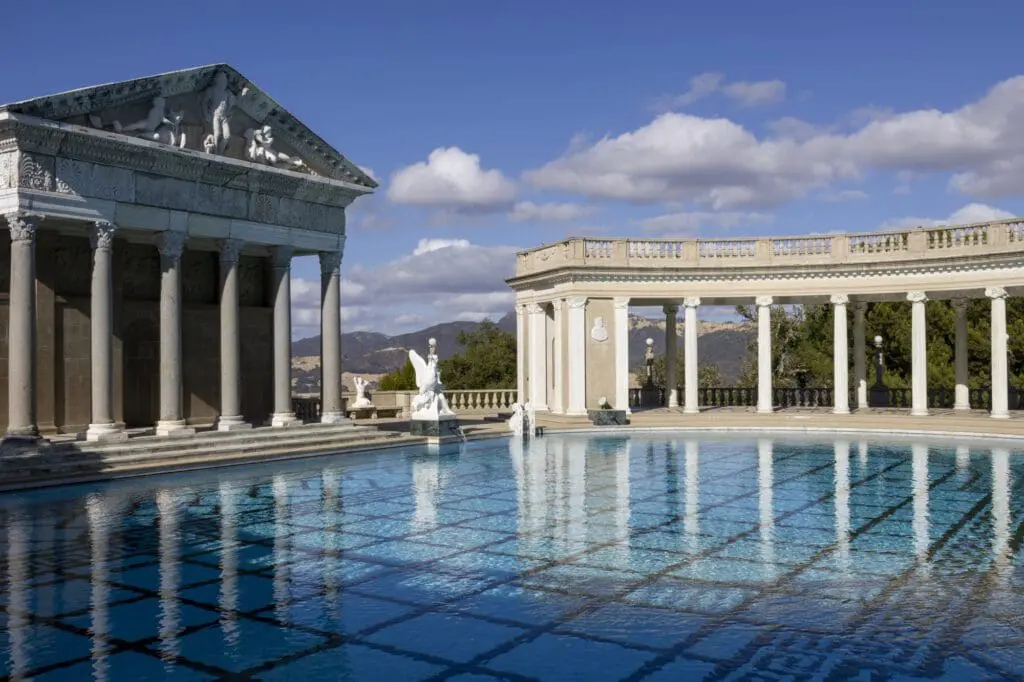
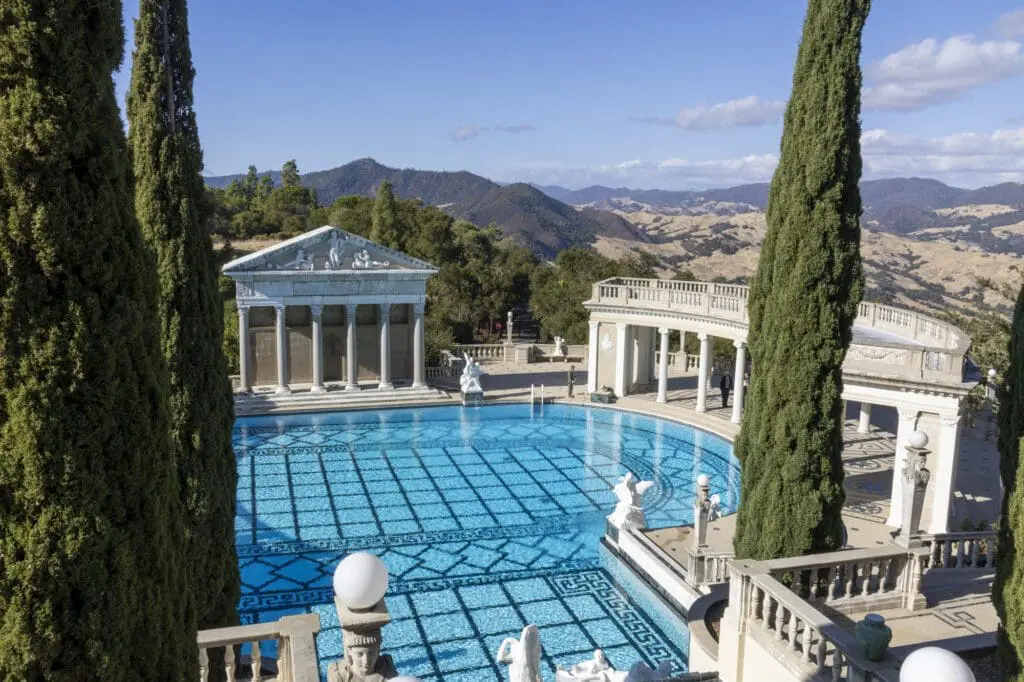
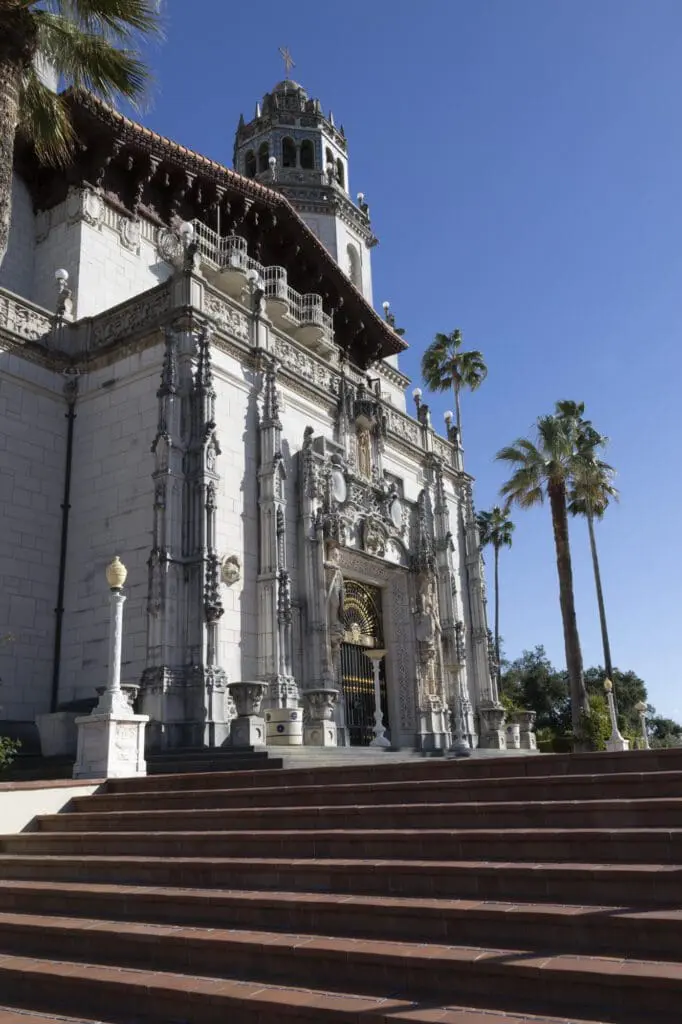
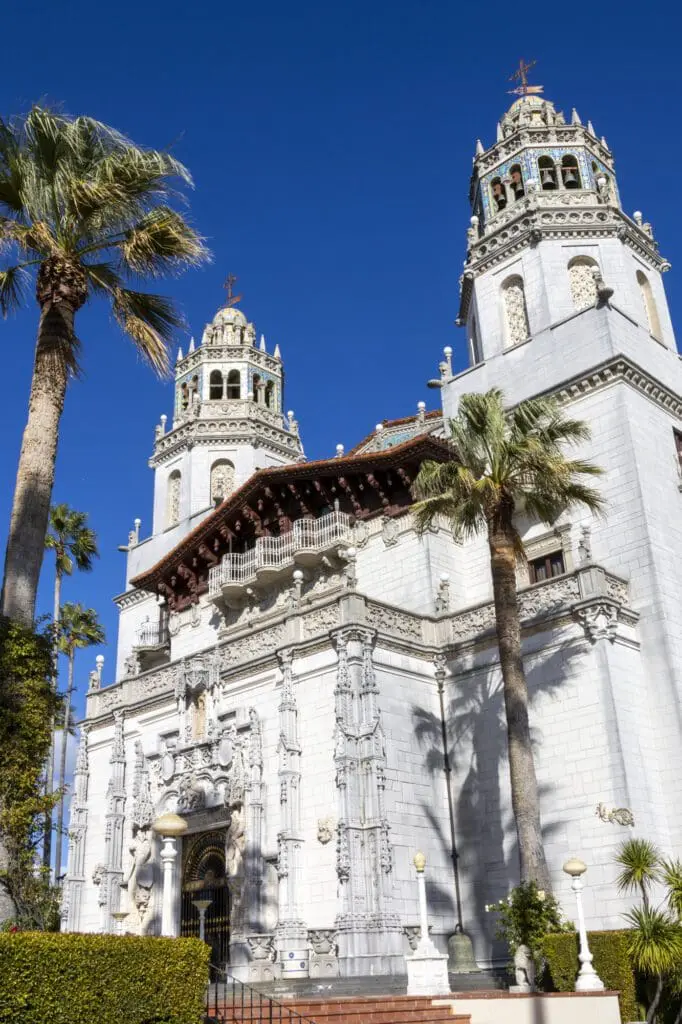
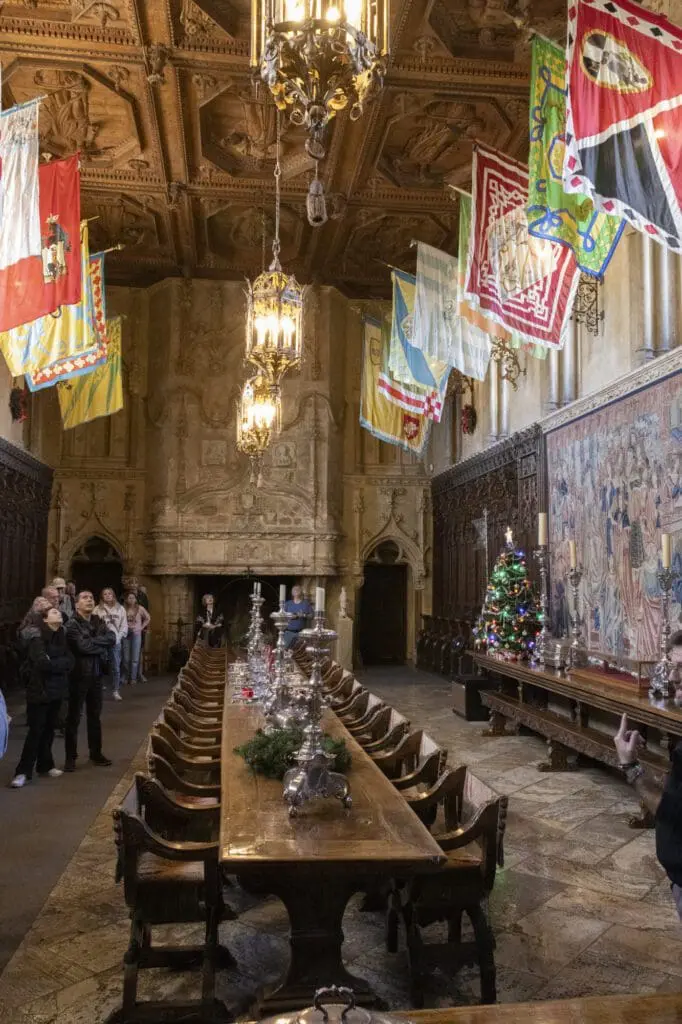
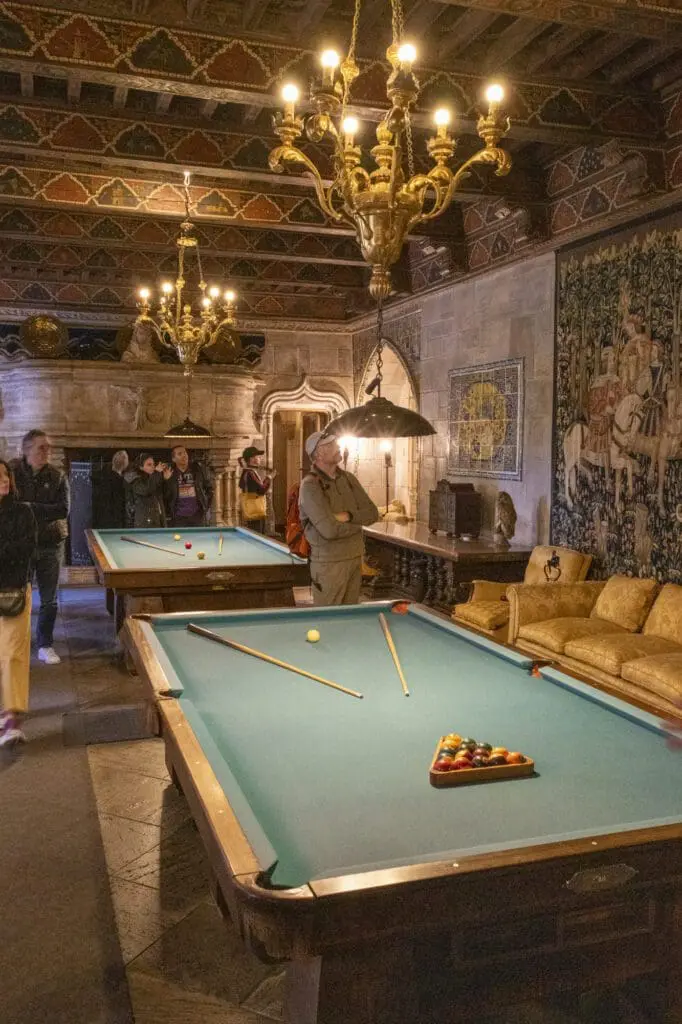
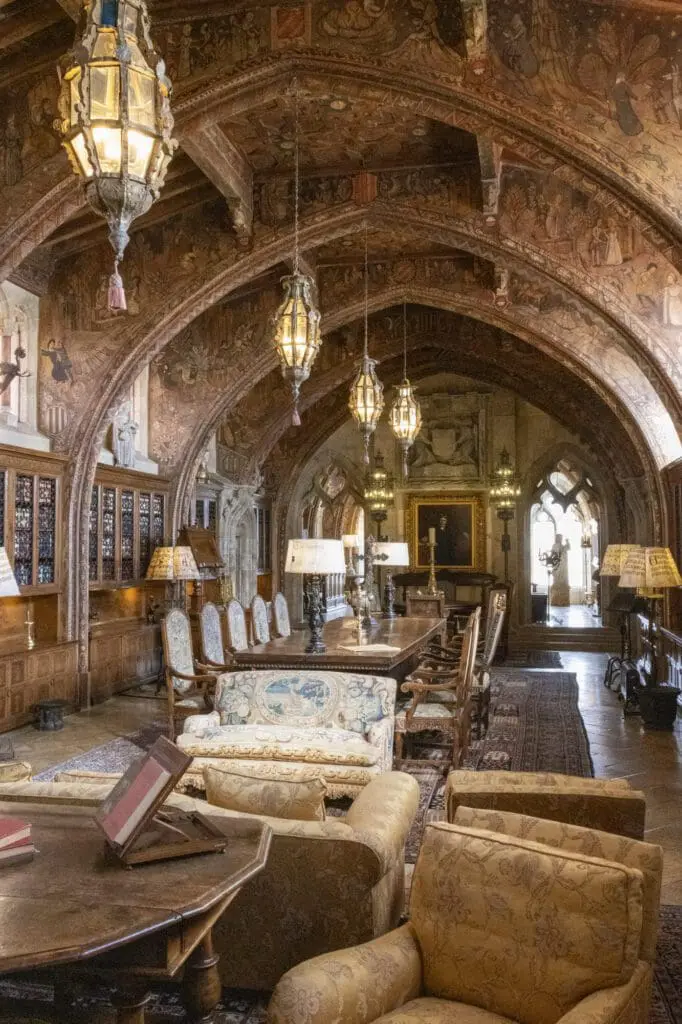

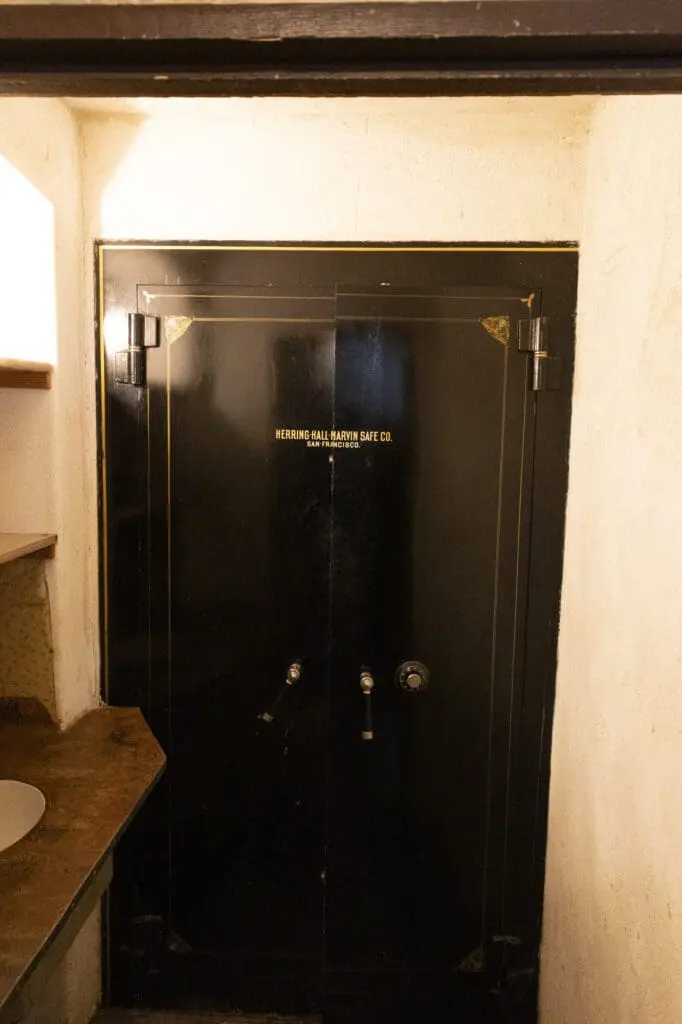
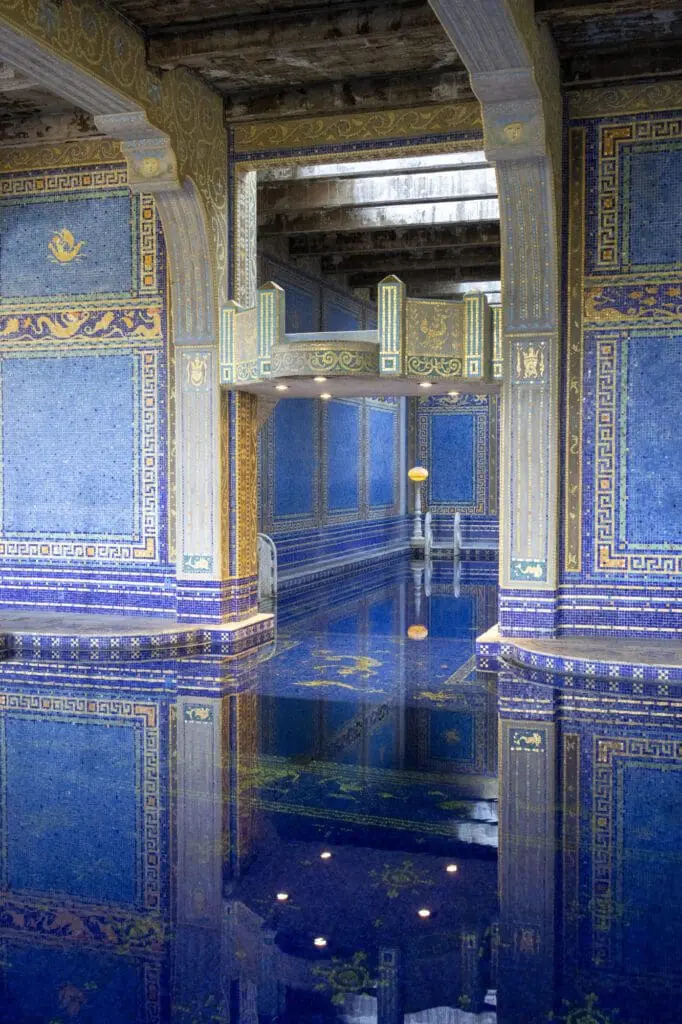
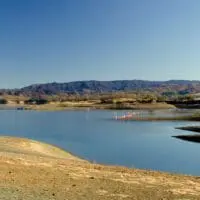

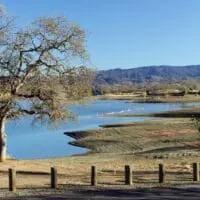
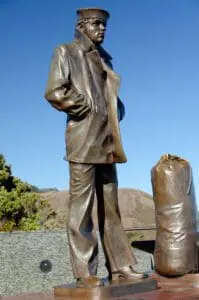
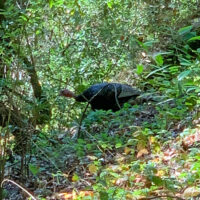









































2 thoughts on “That Little Ranch in San Simeon”
An amazing travel log, Mark. Beautiful pictures. Well done. Brought back memories.
Thanks for reminding me how beautiful San Simeon was!